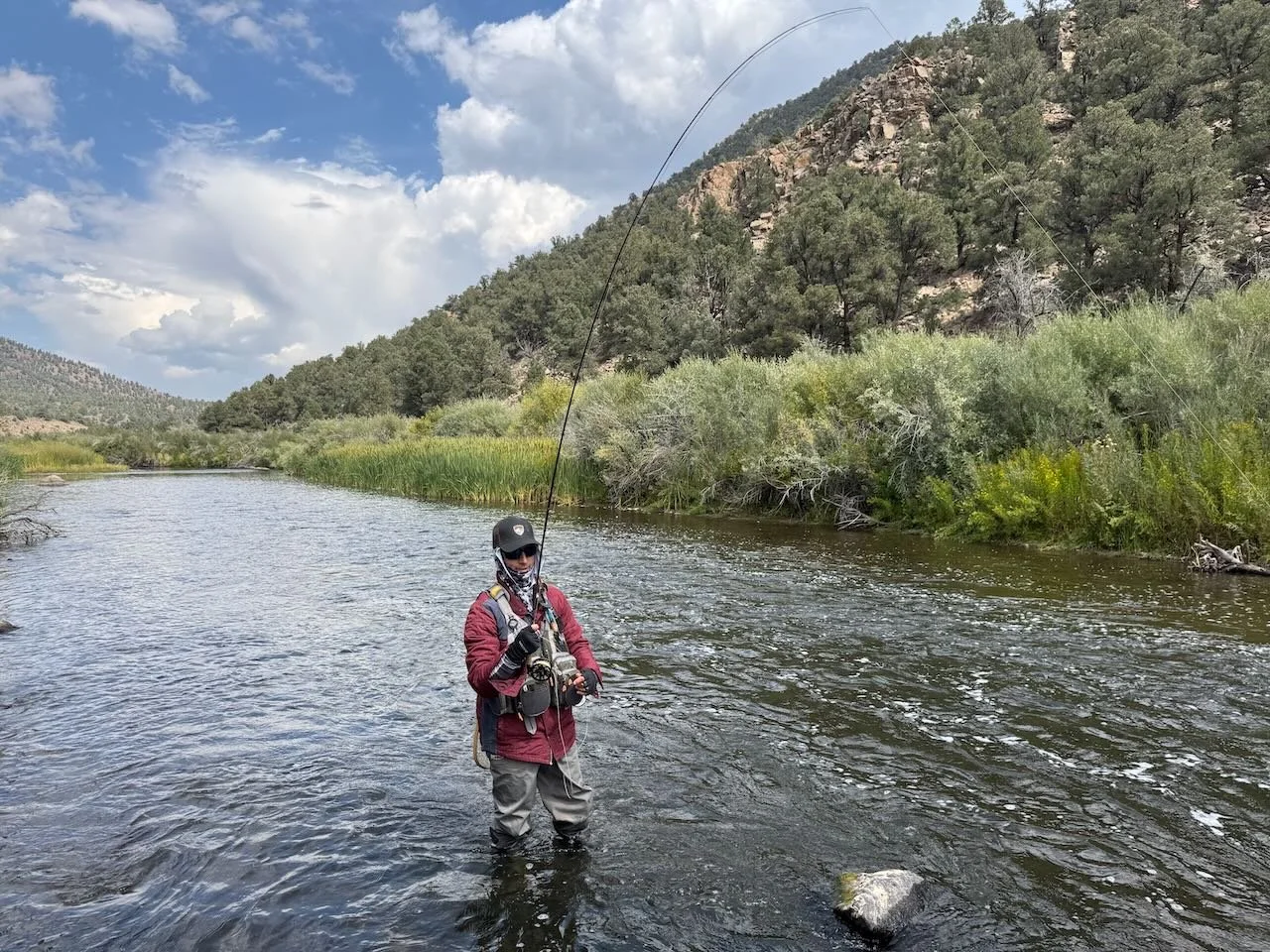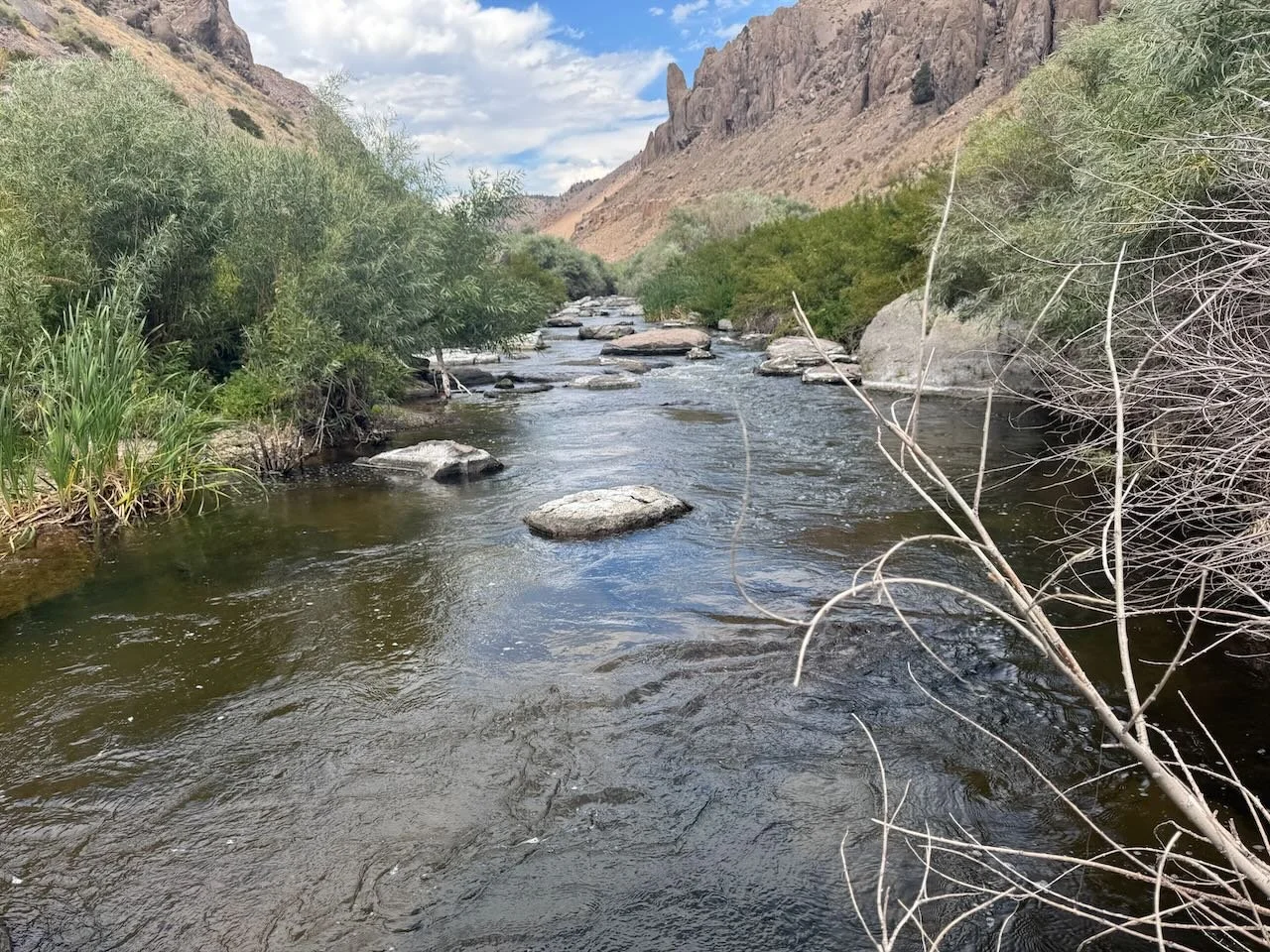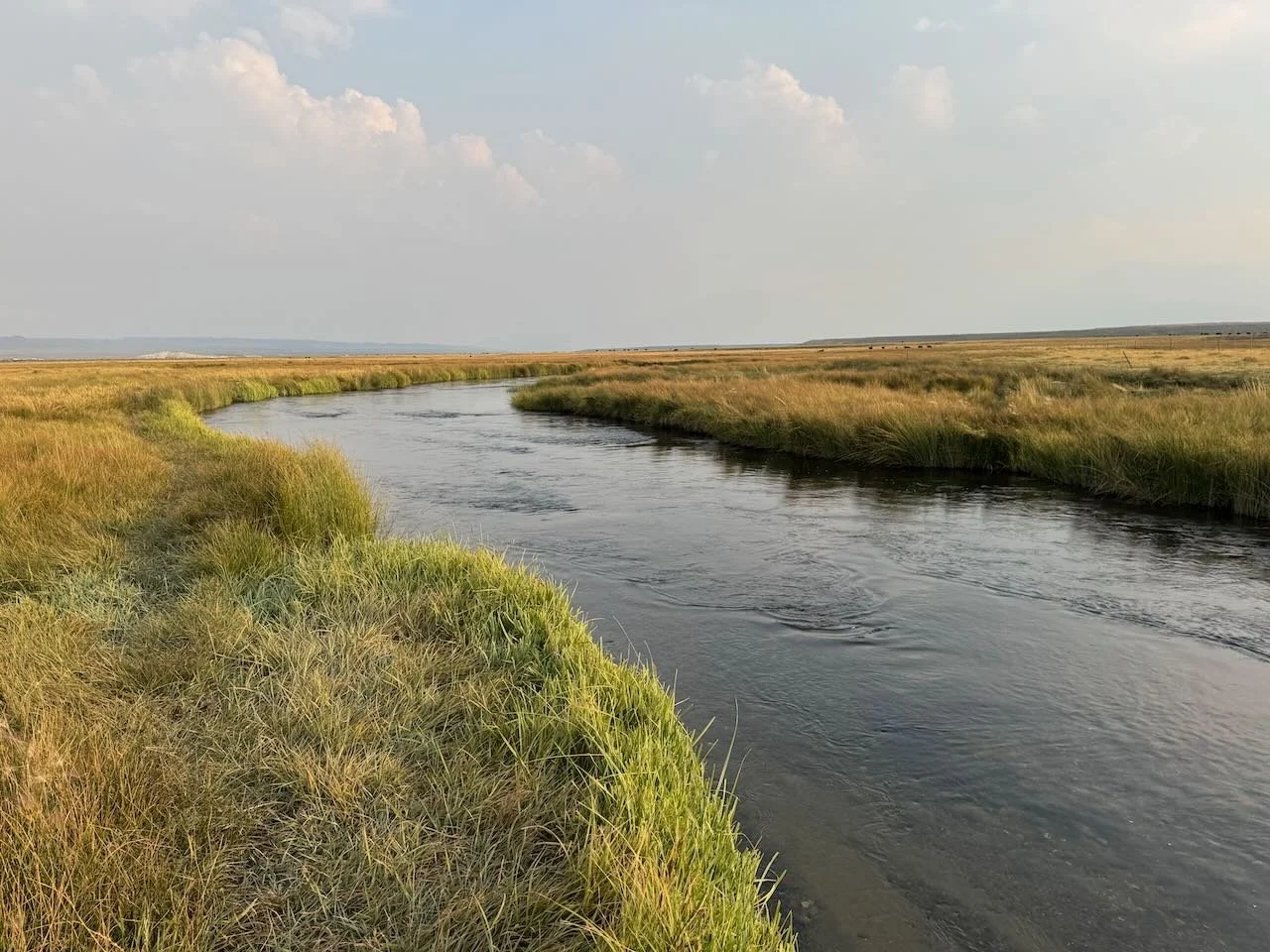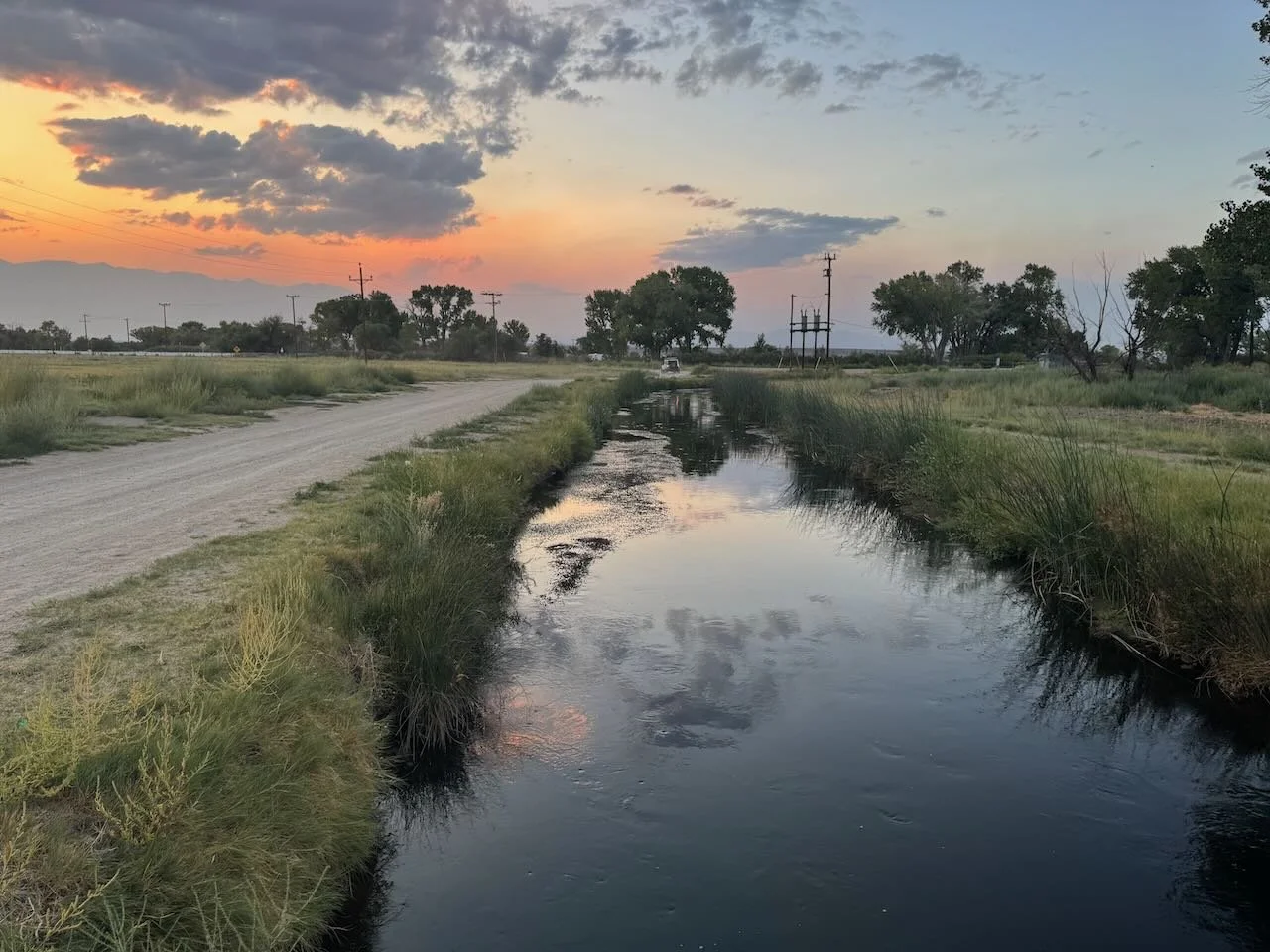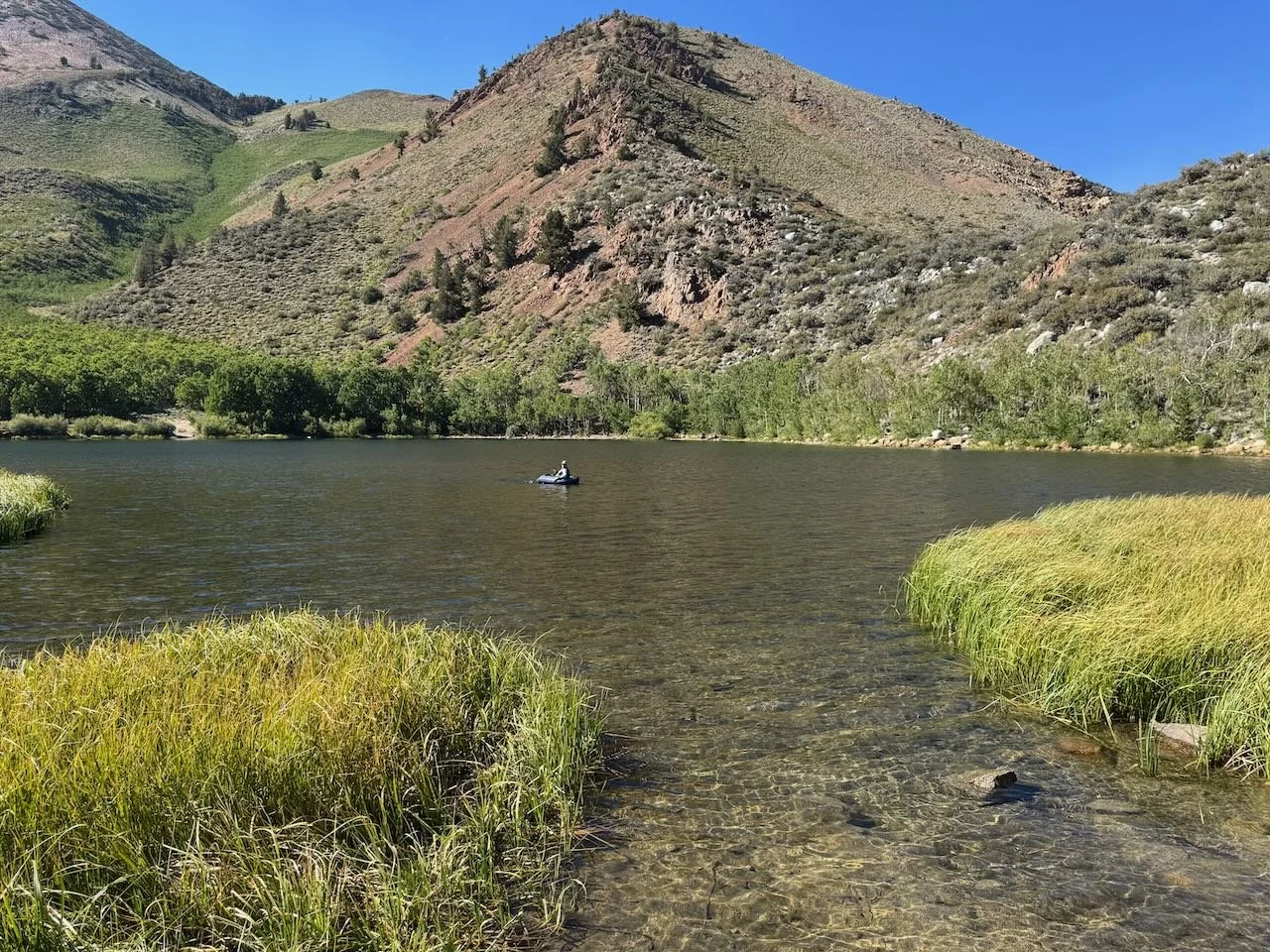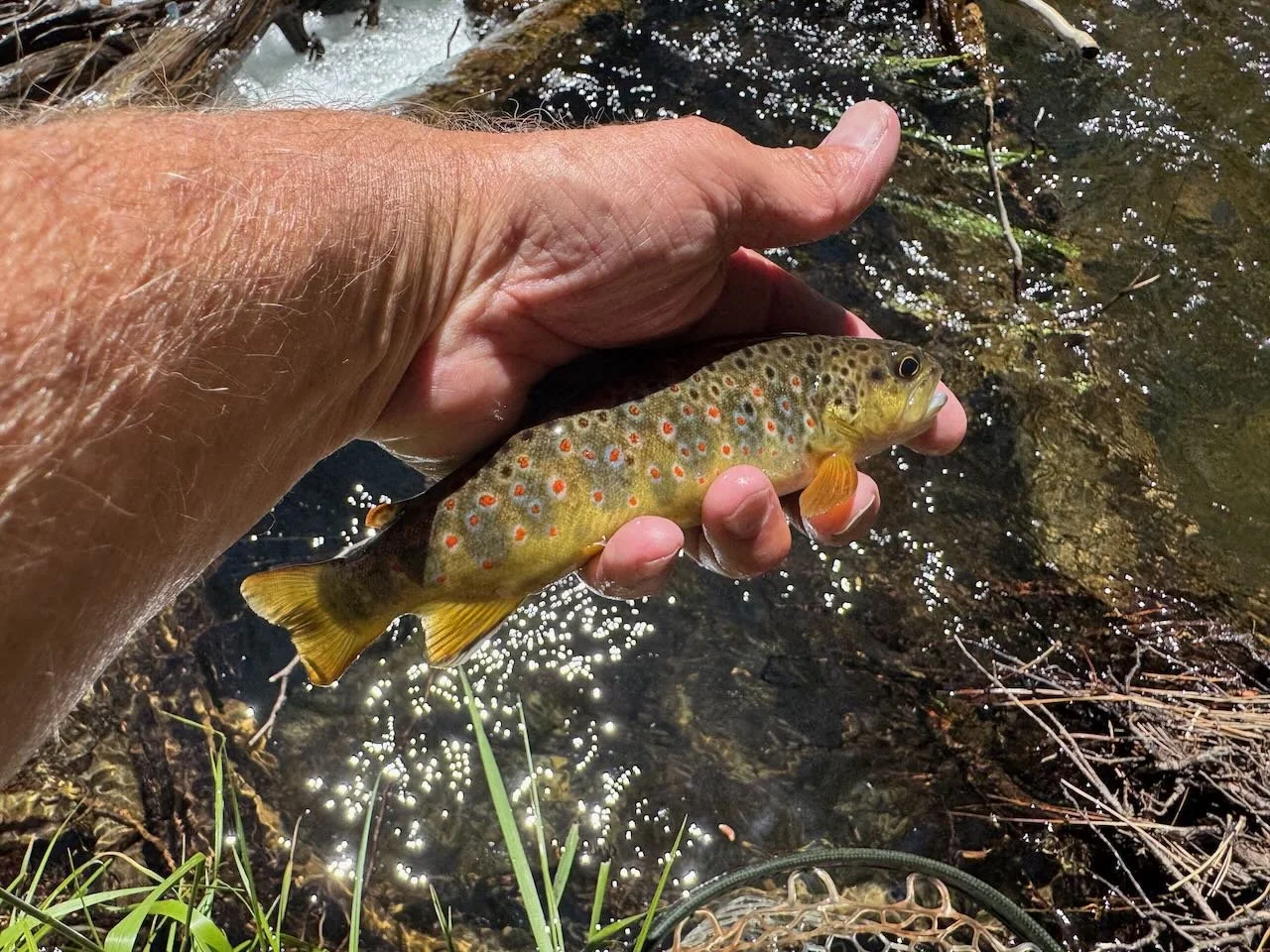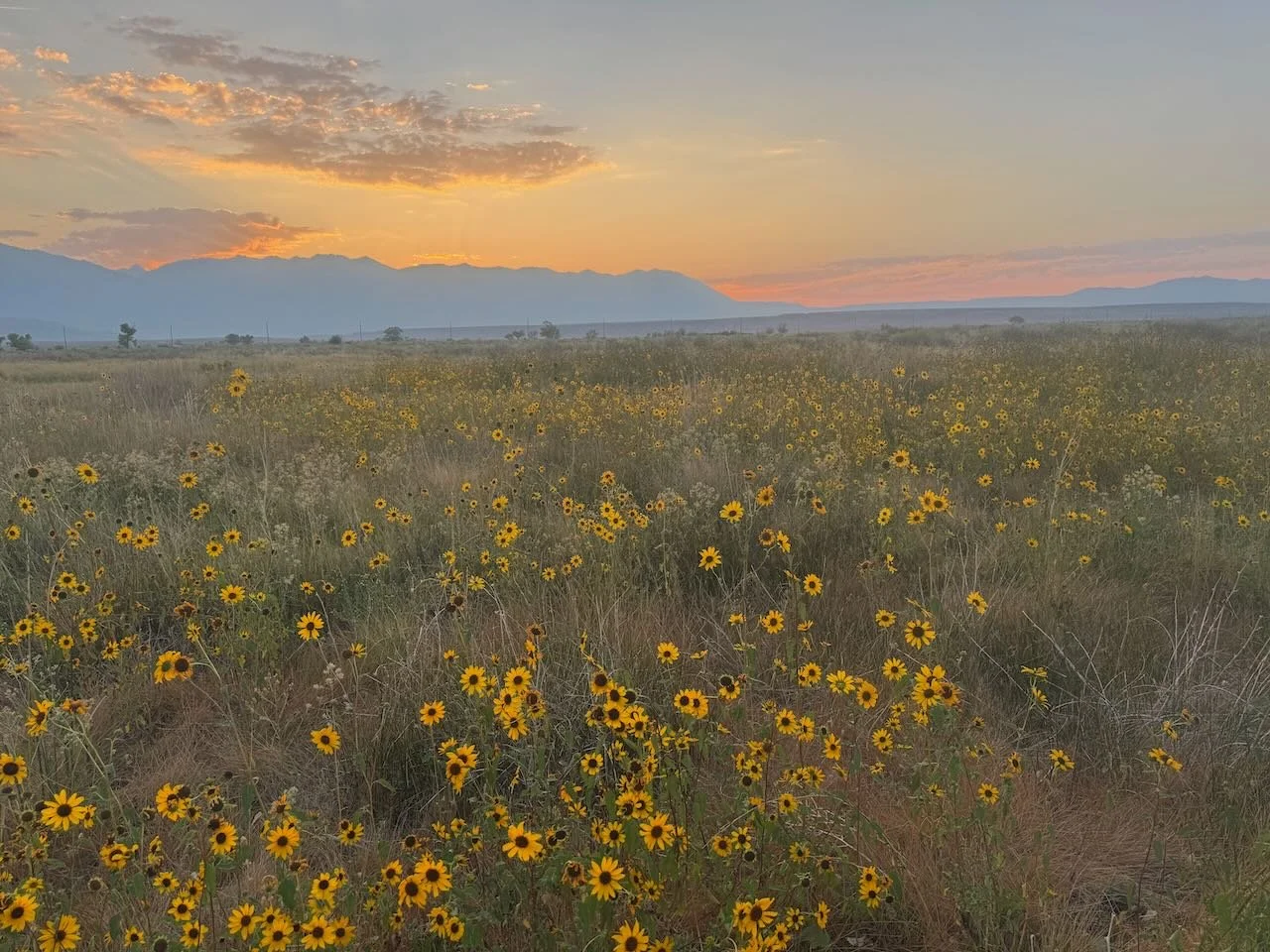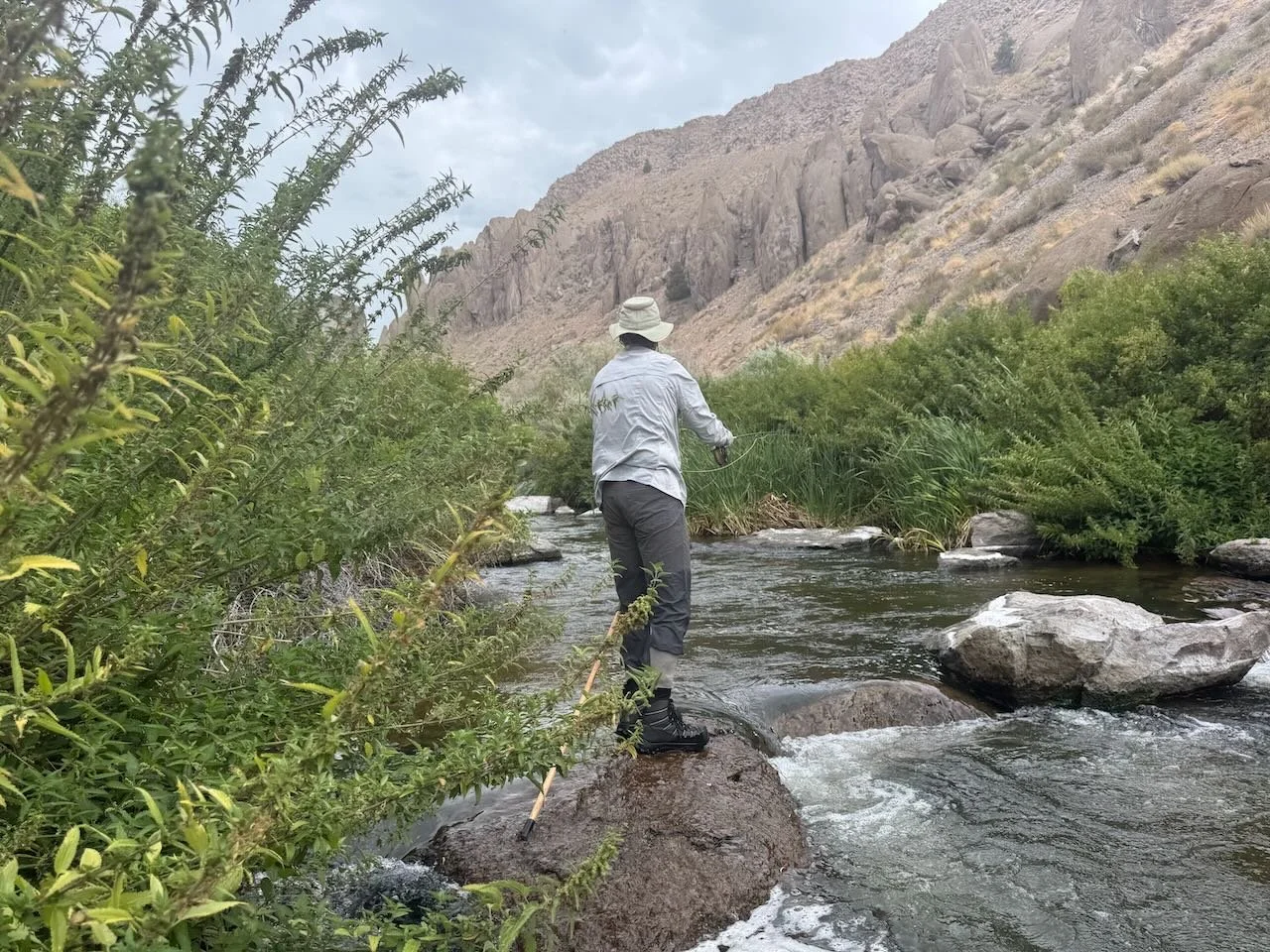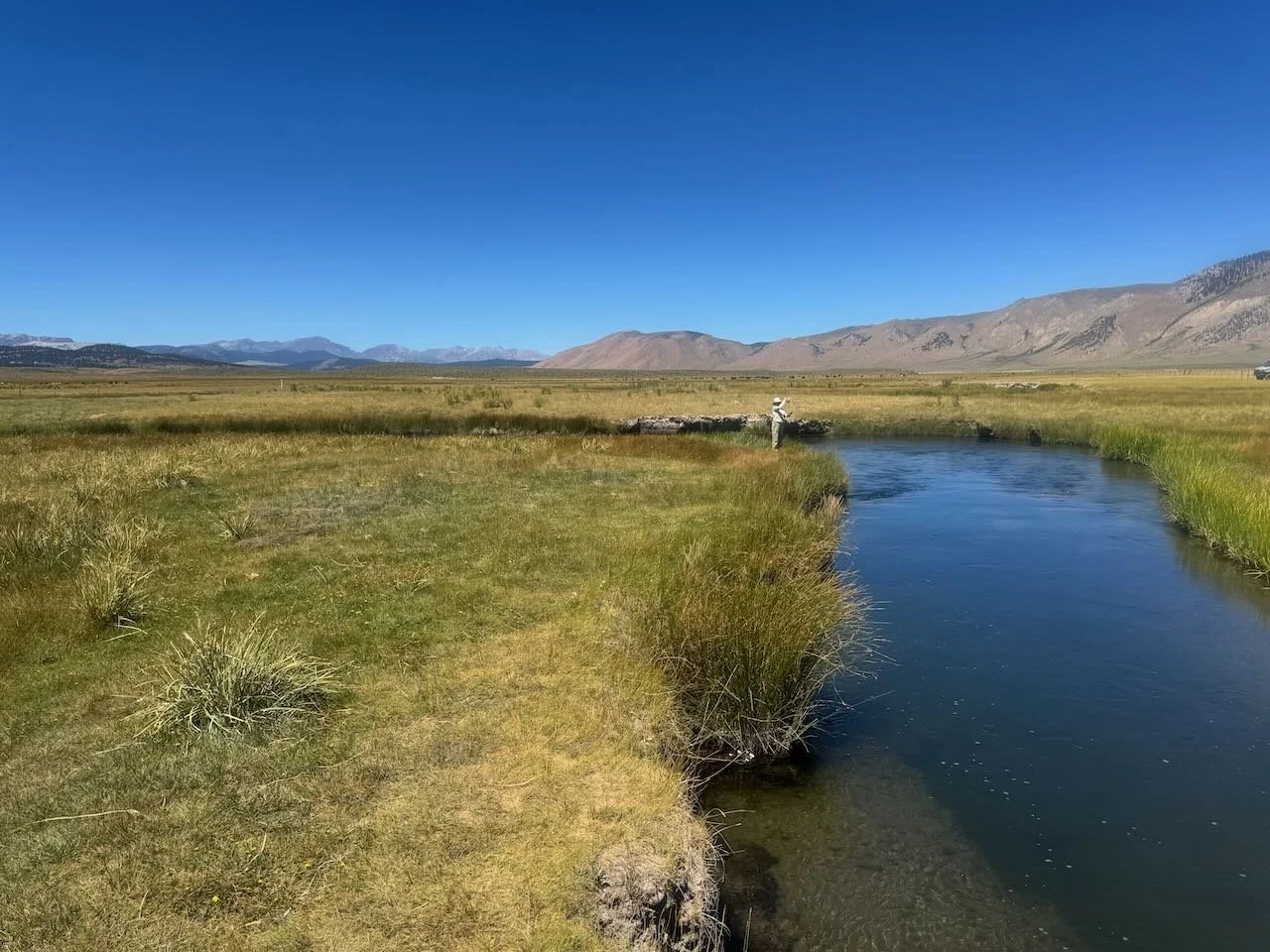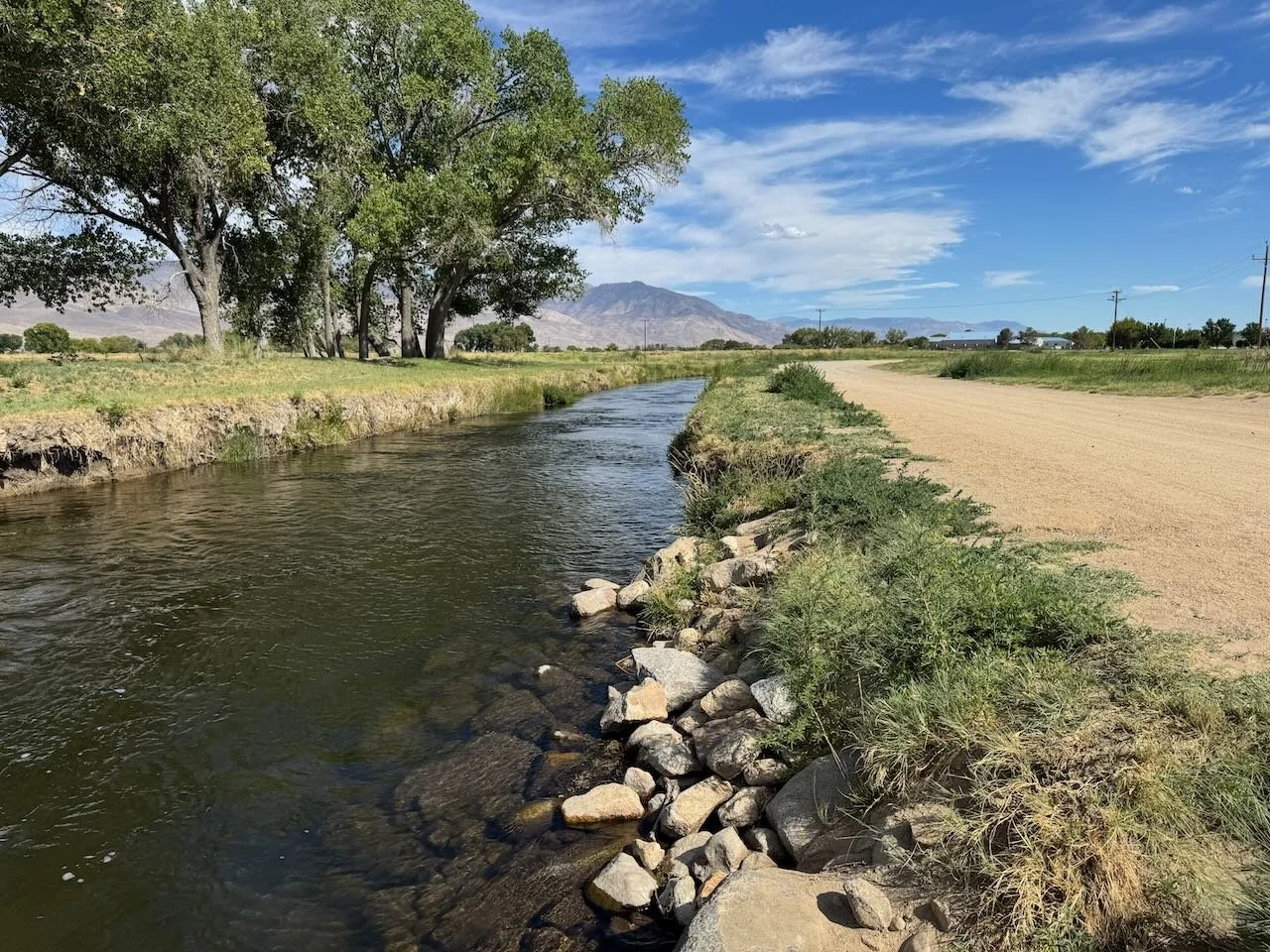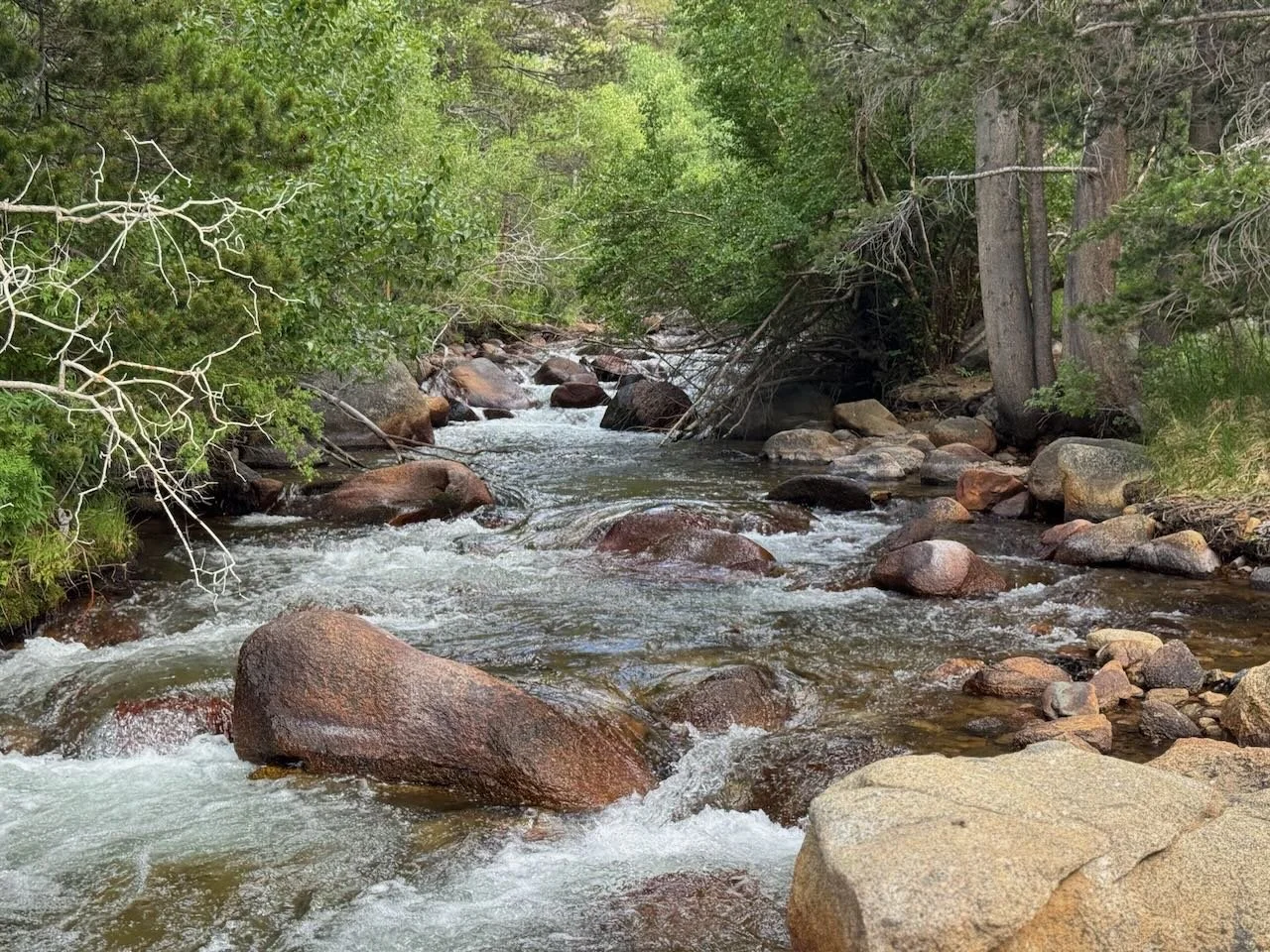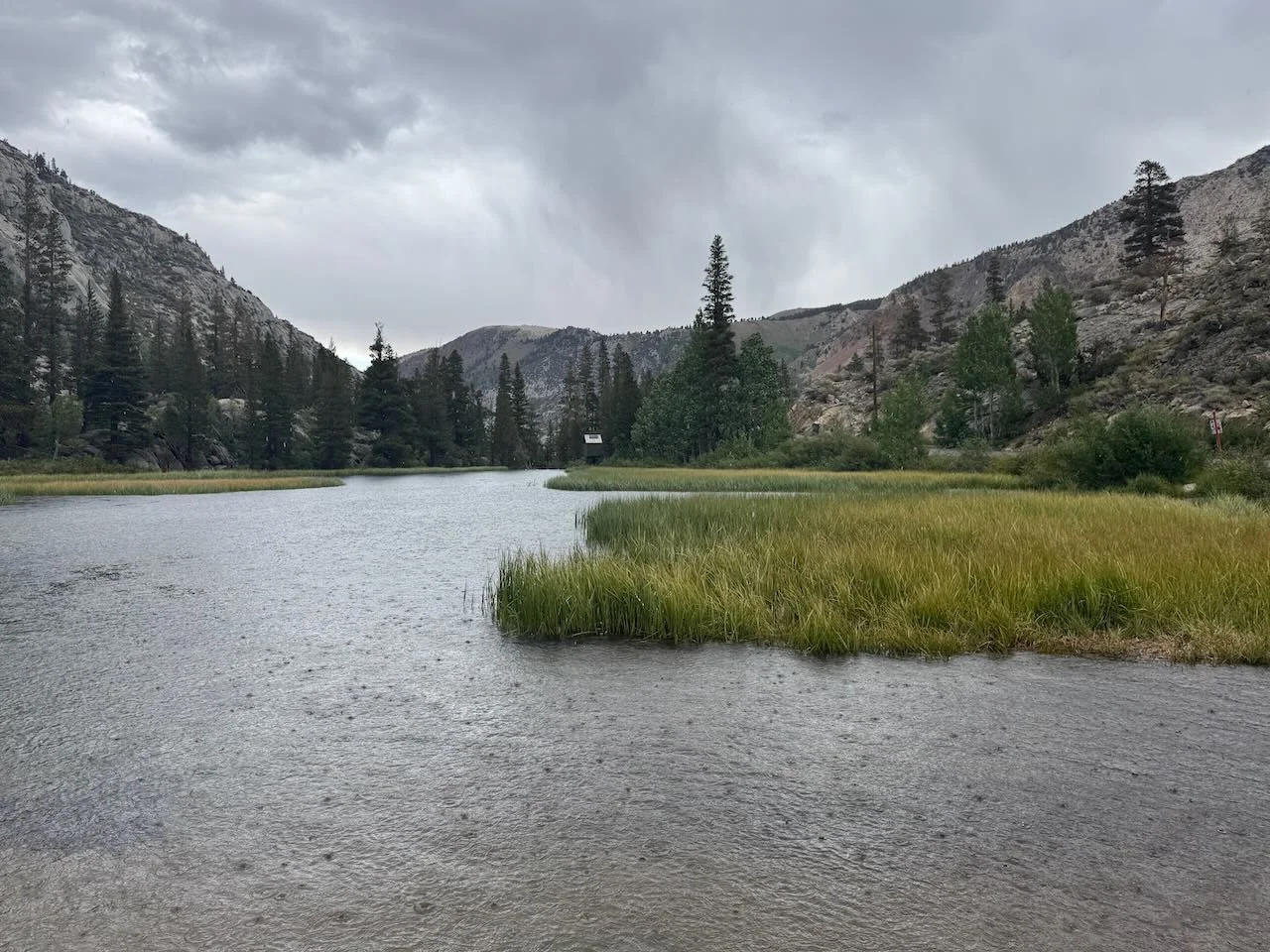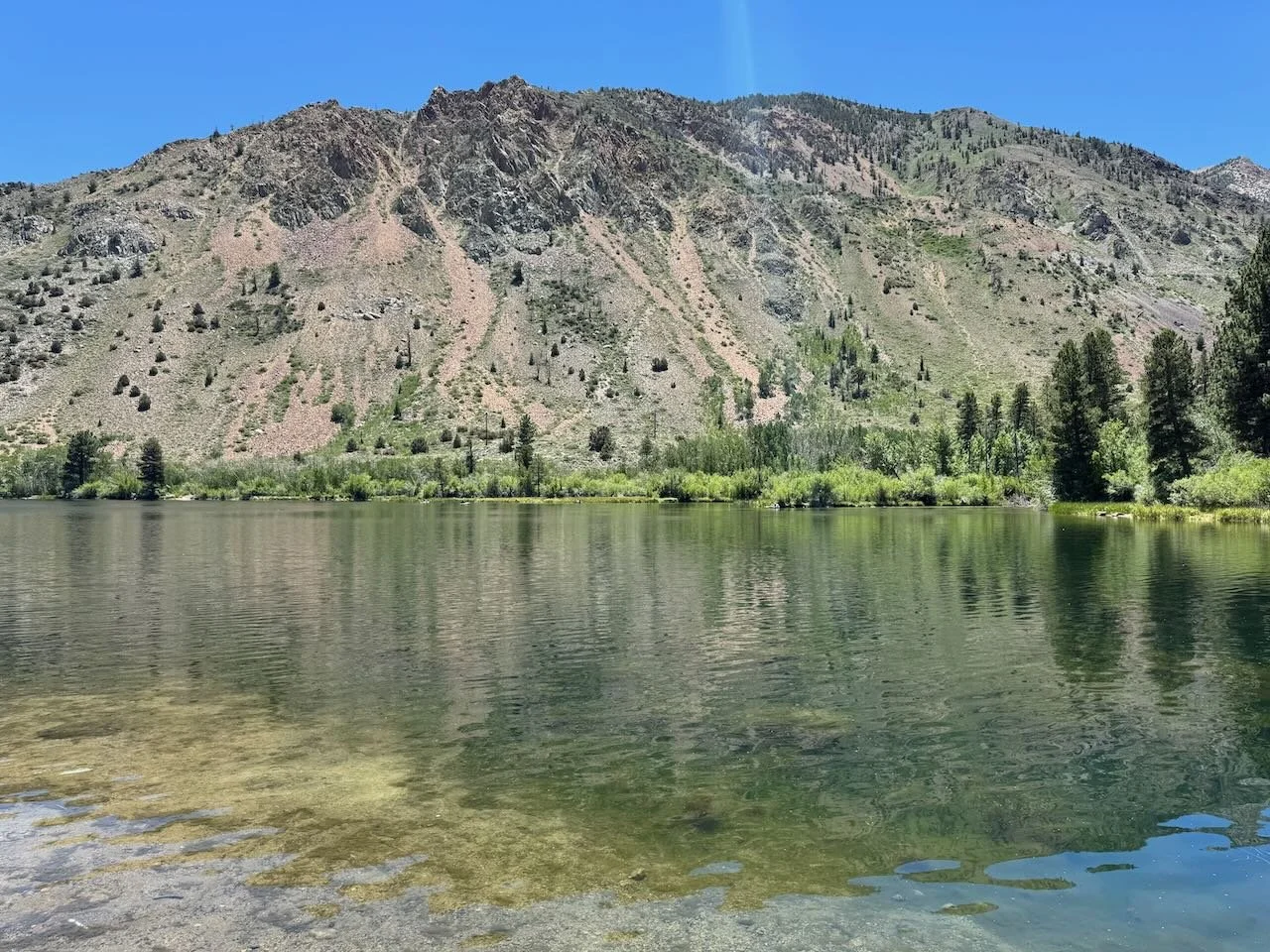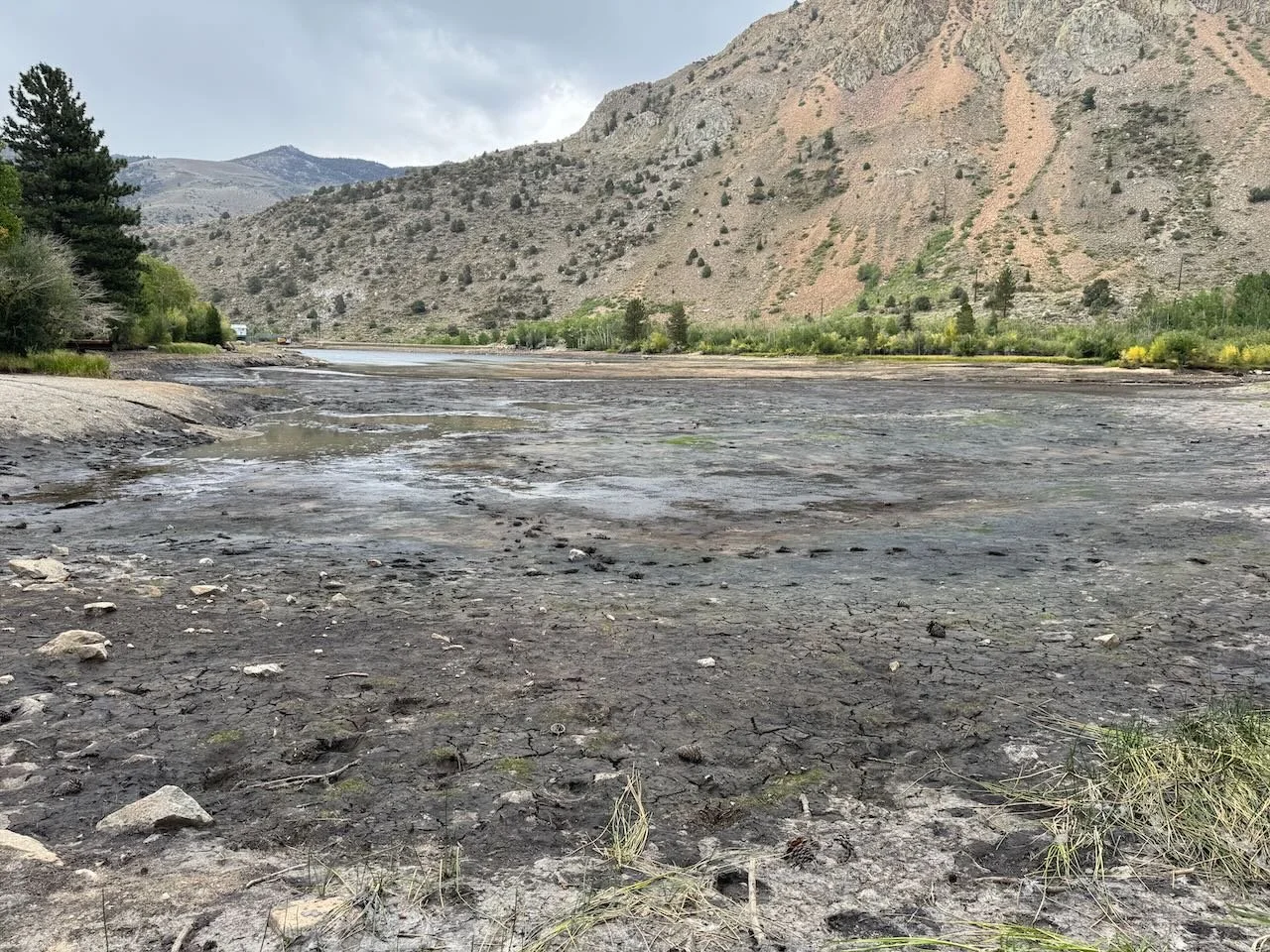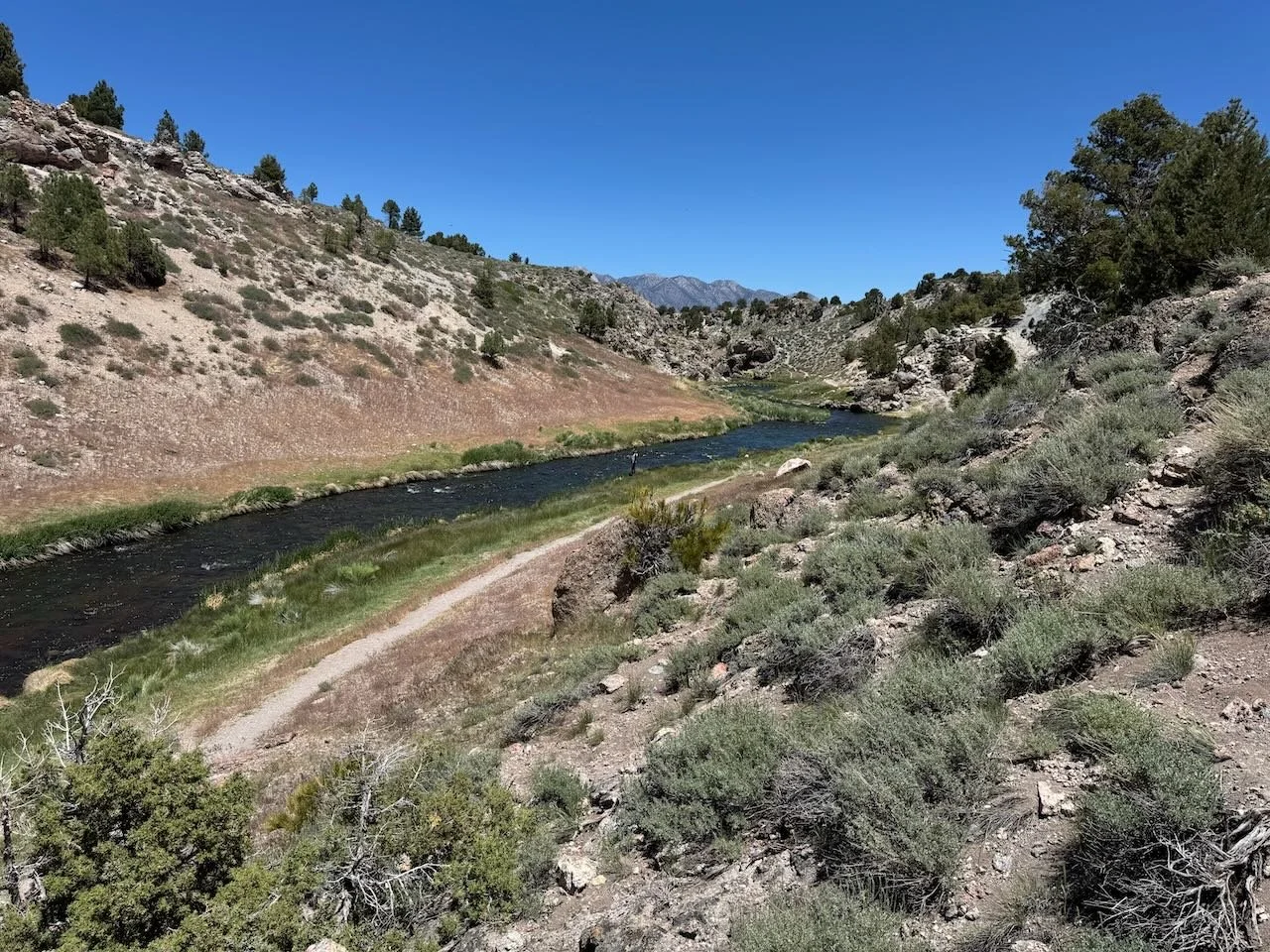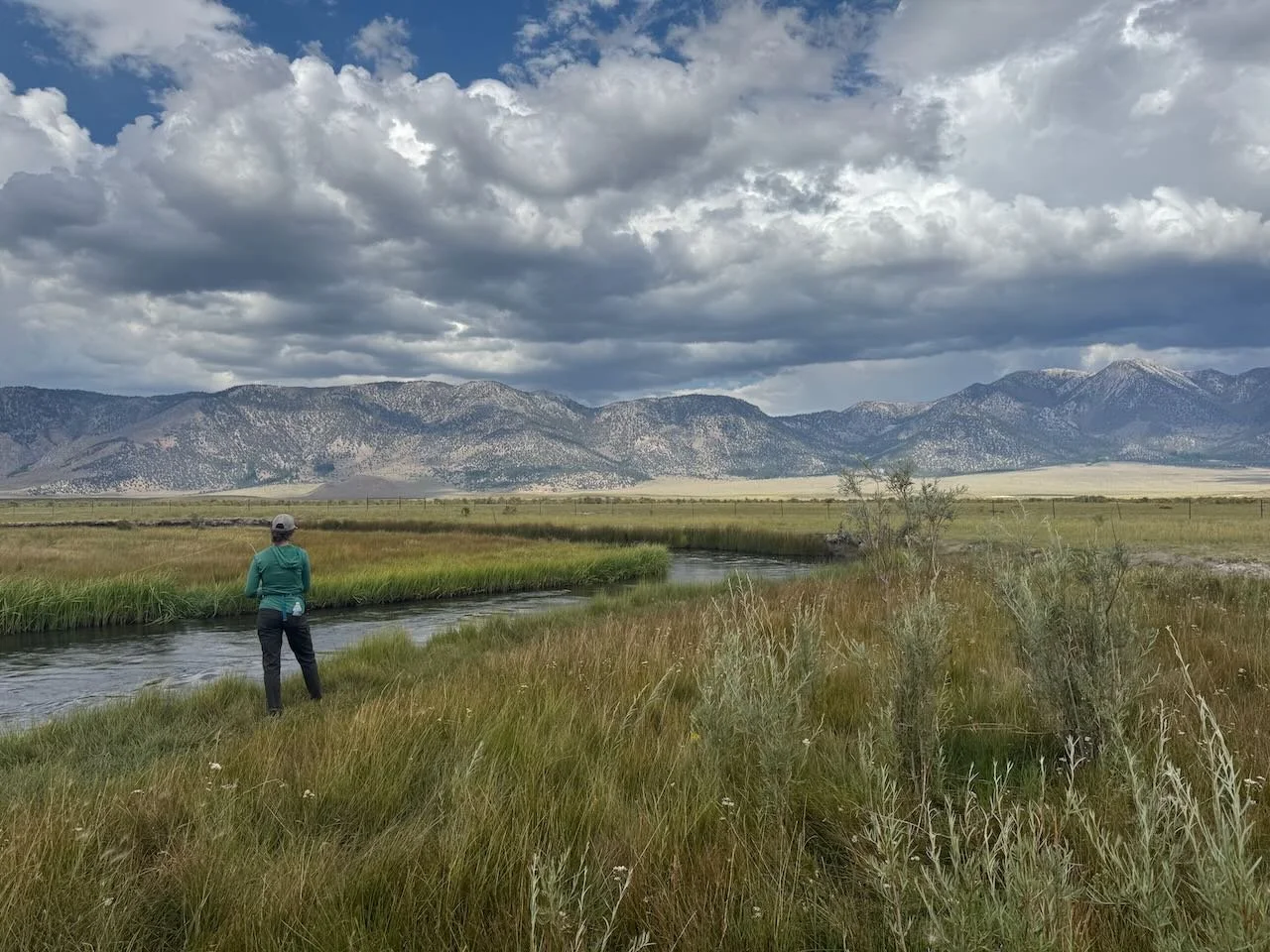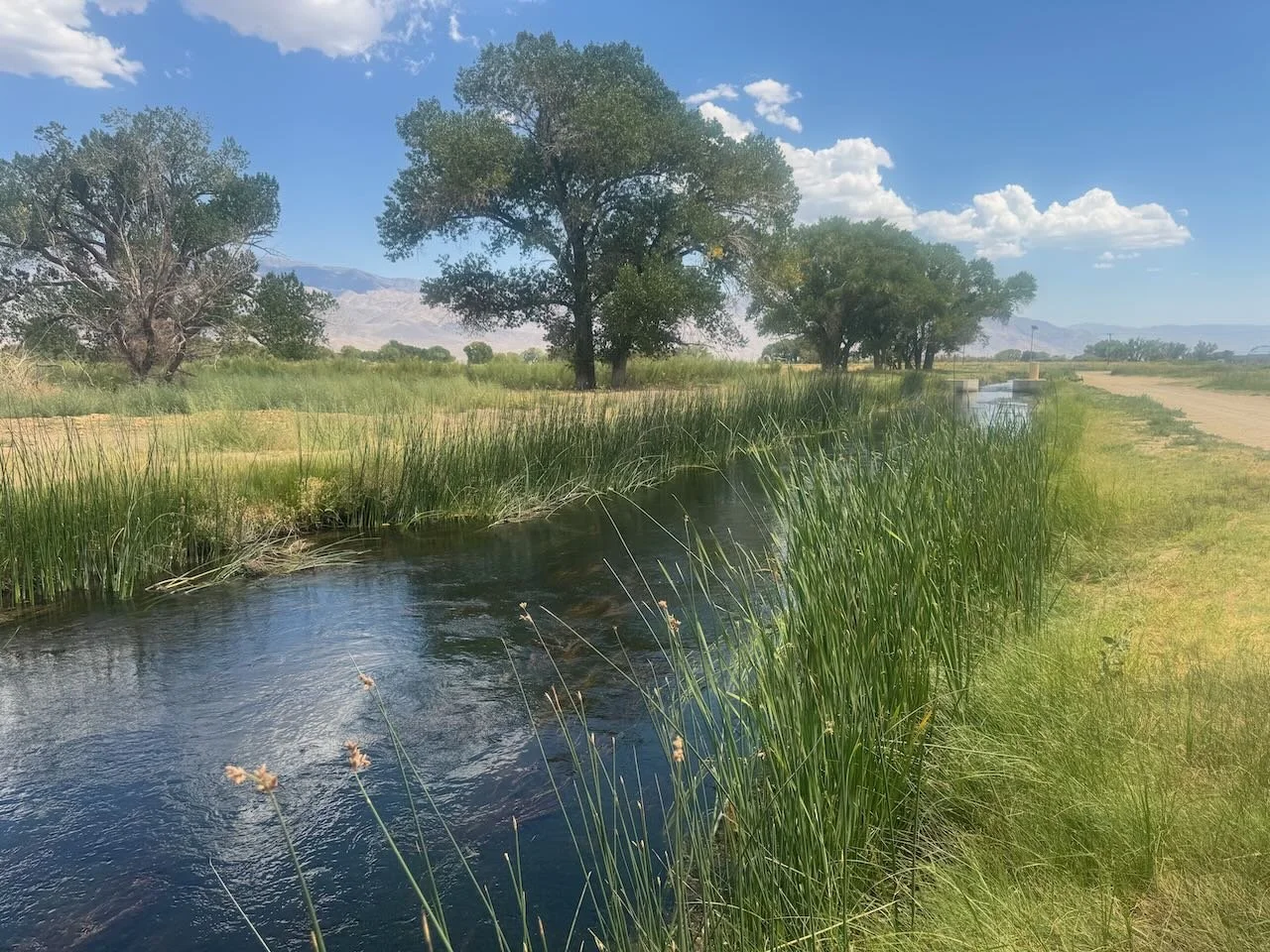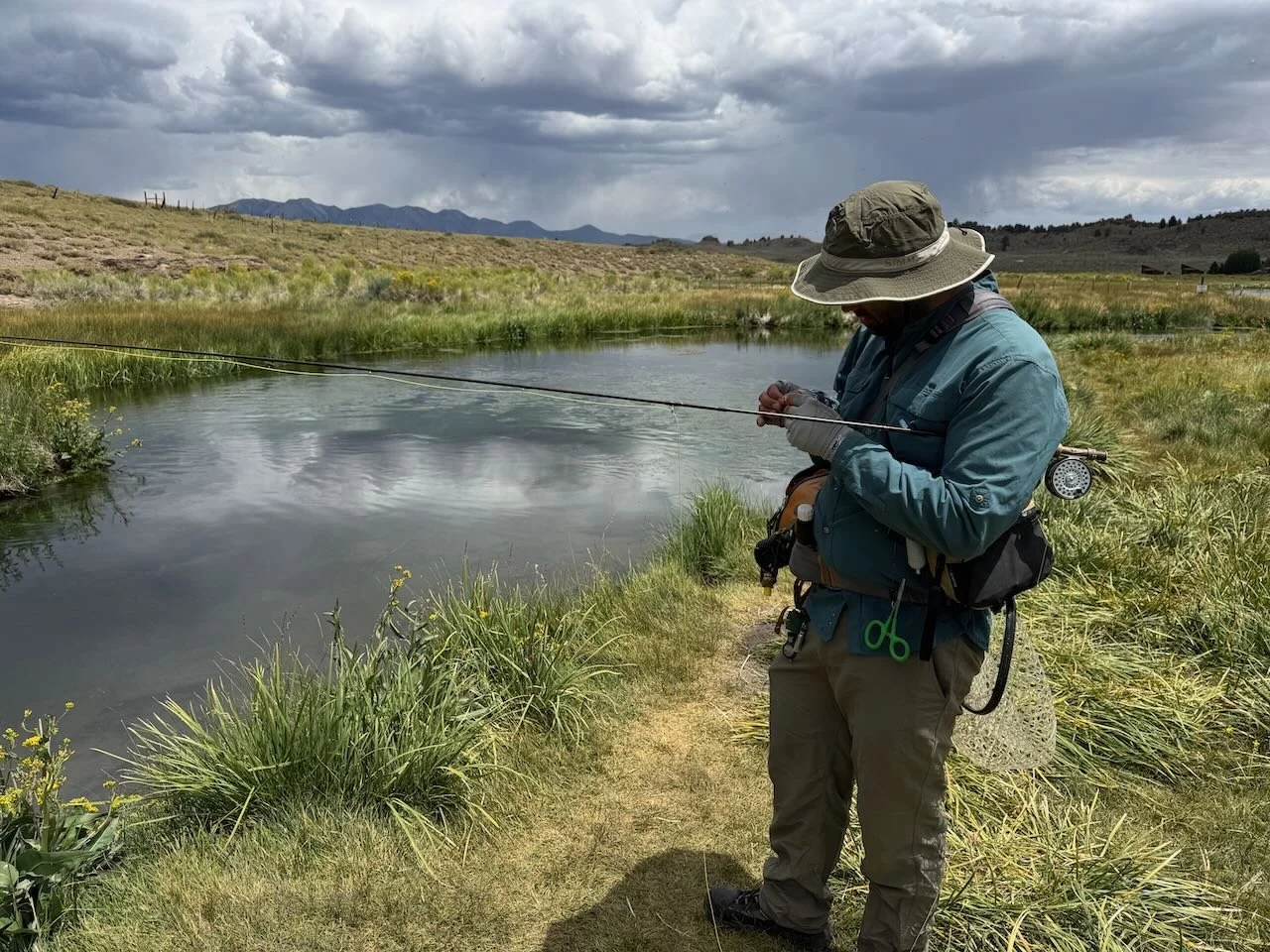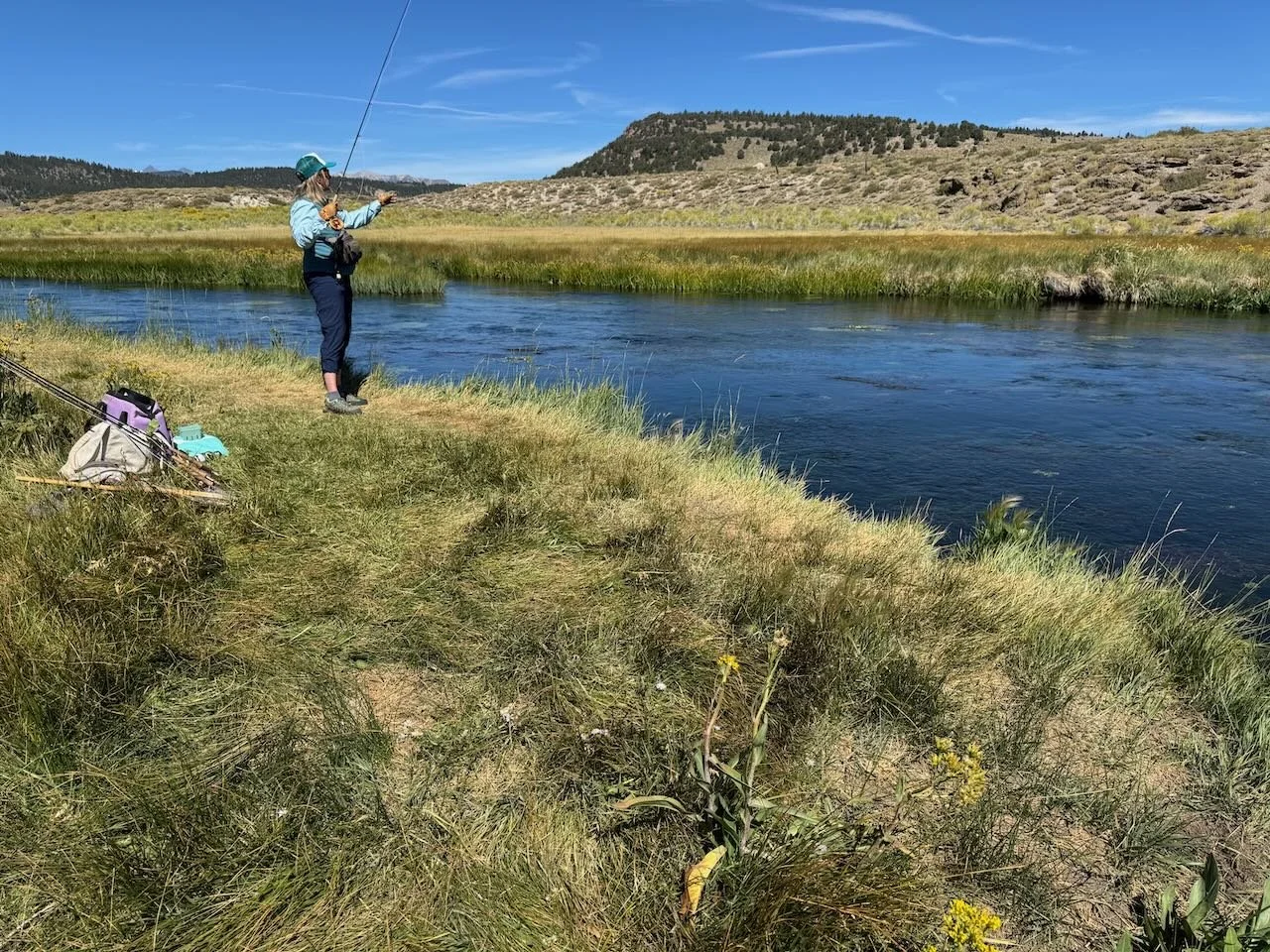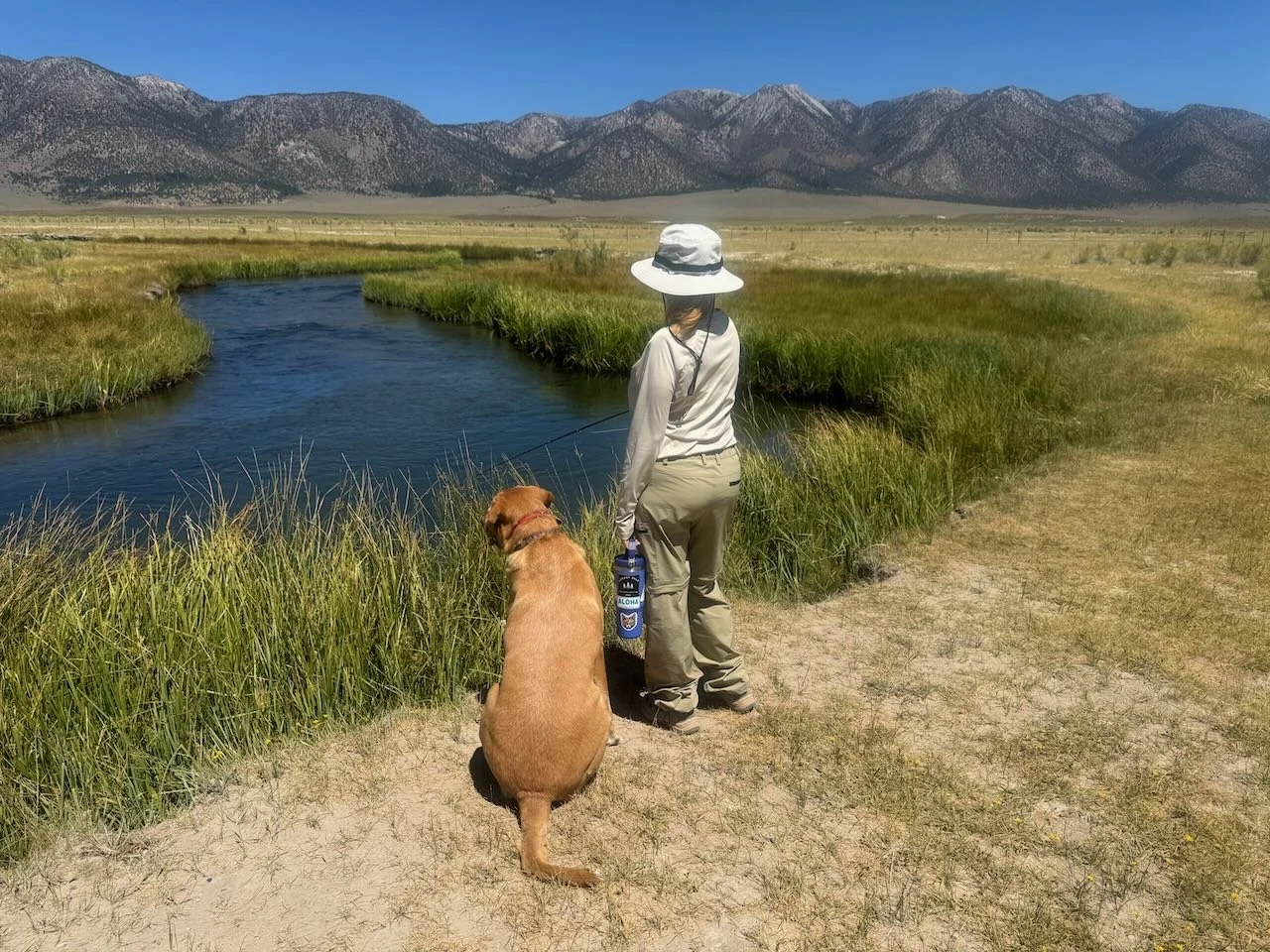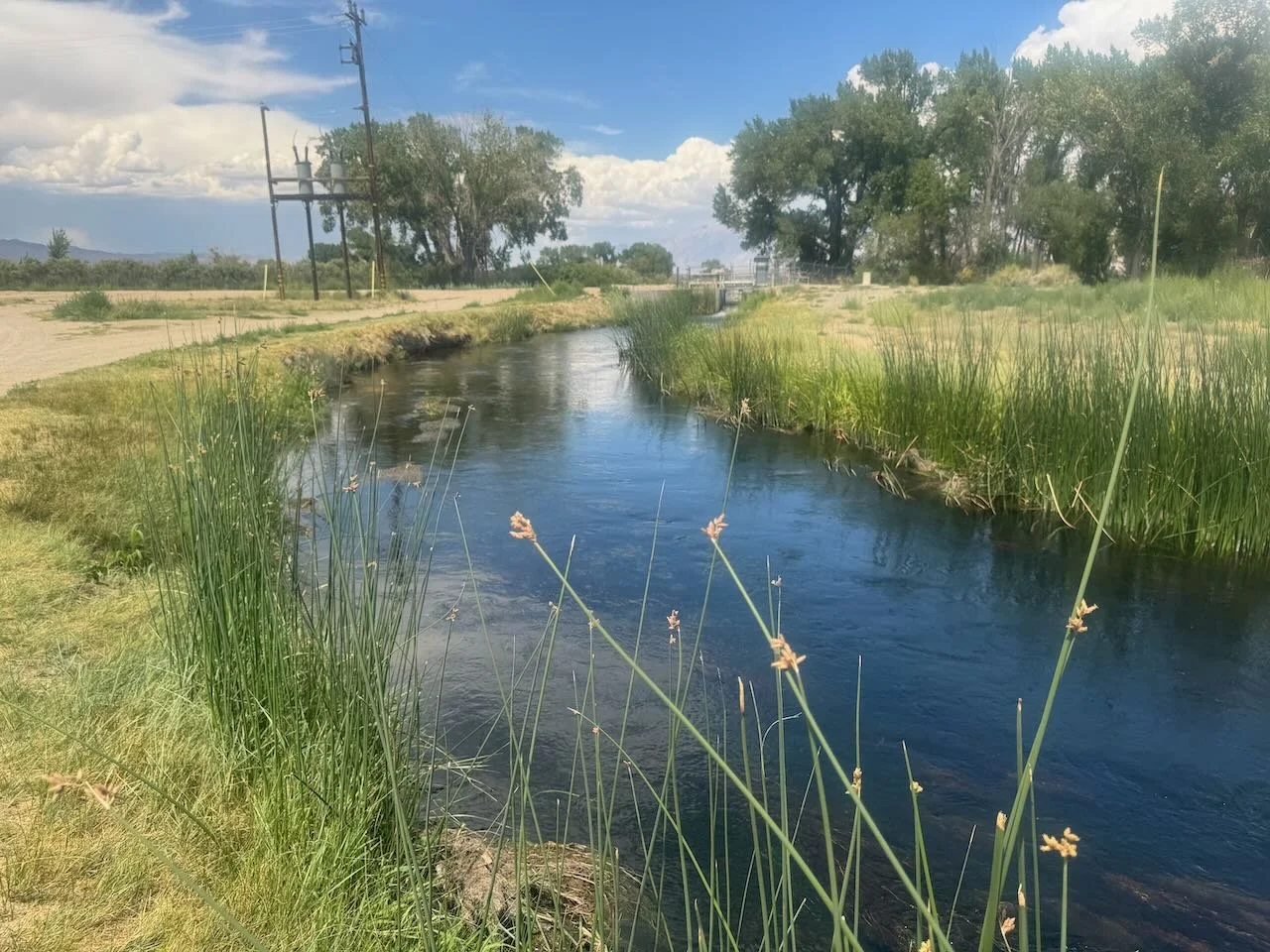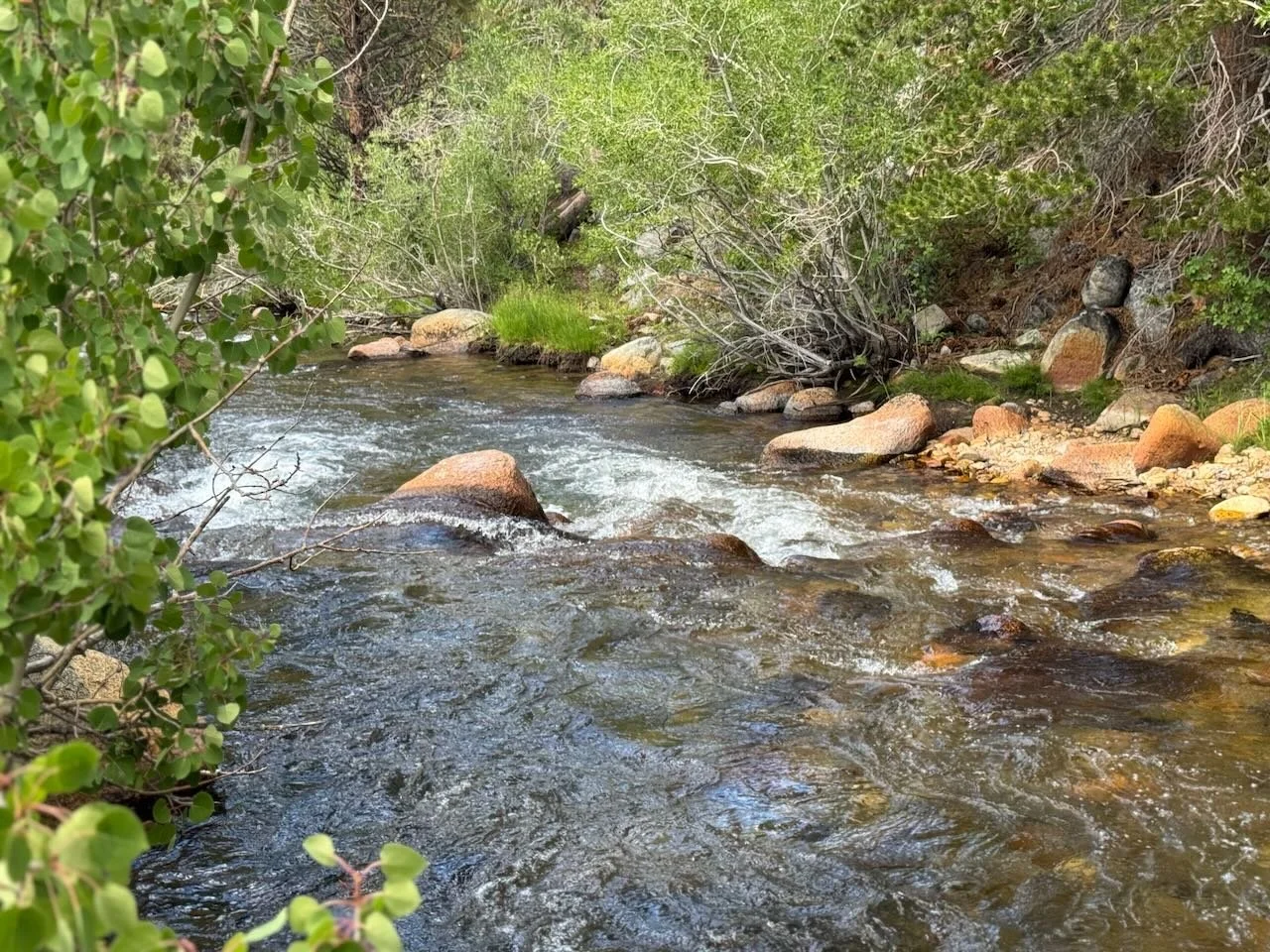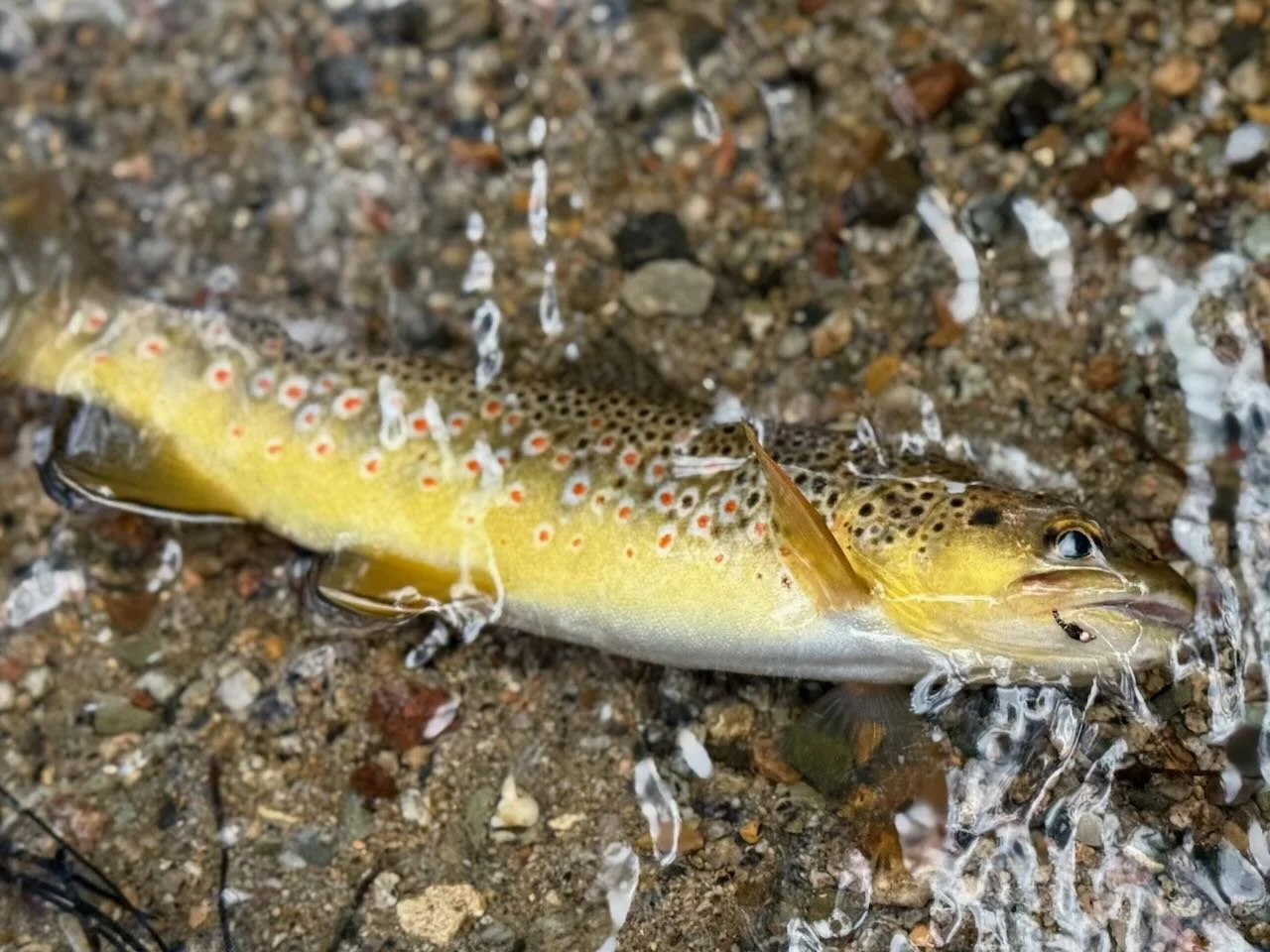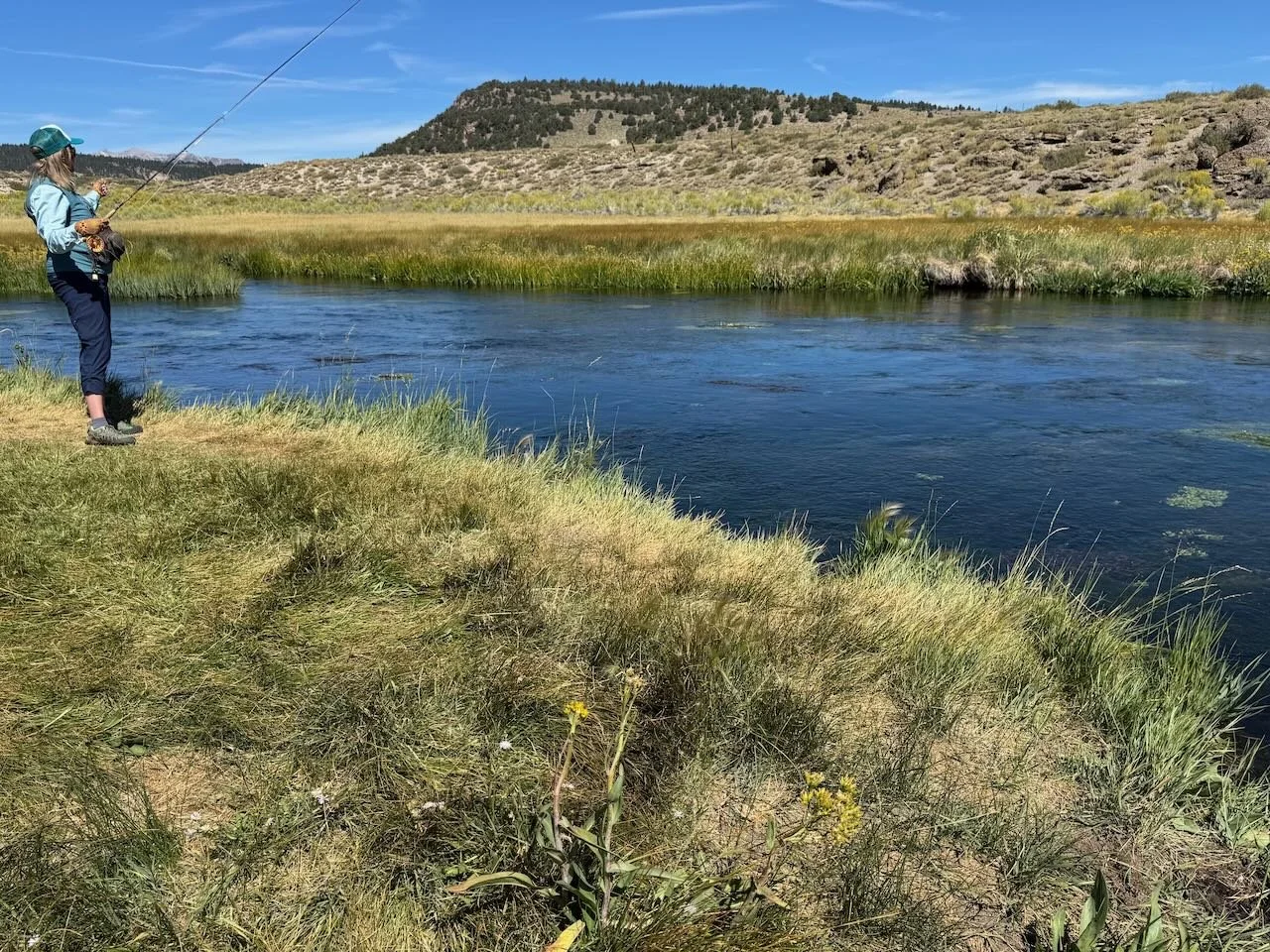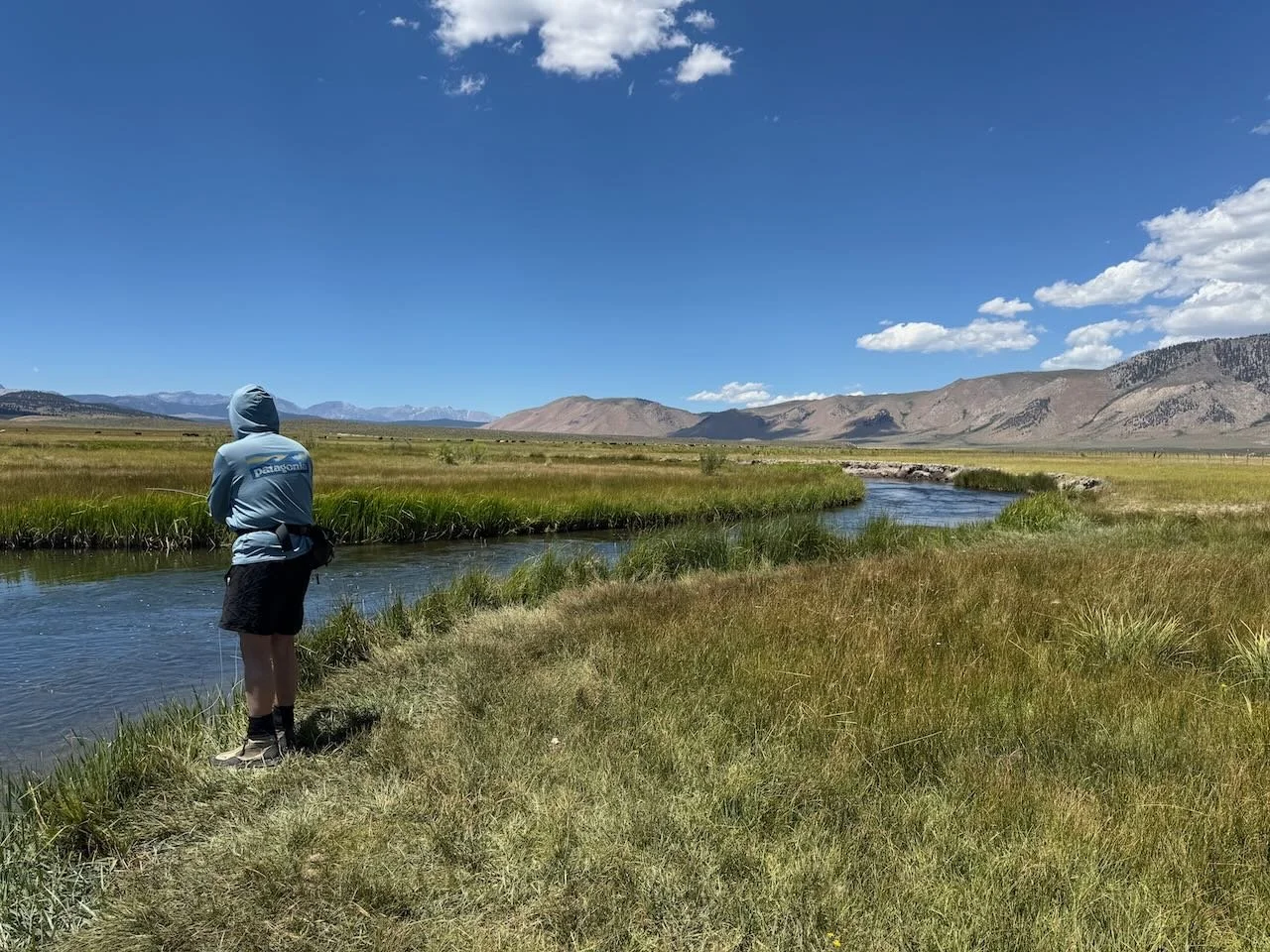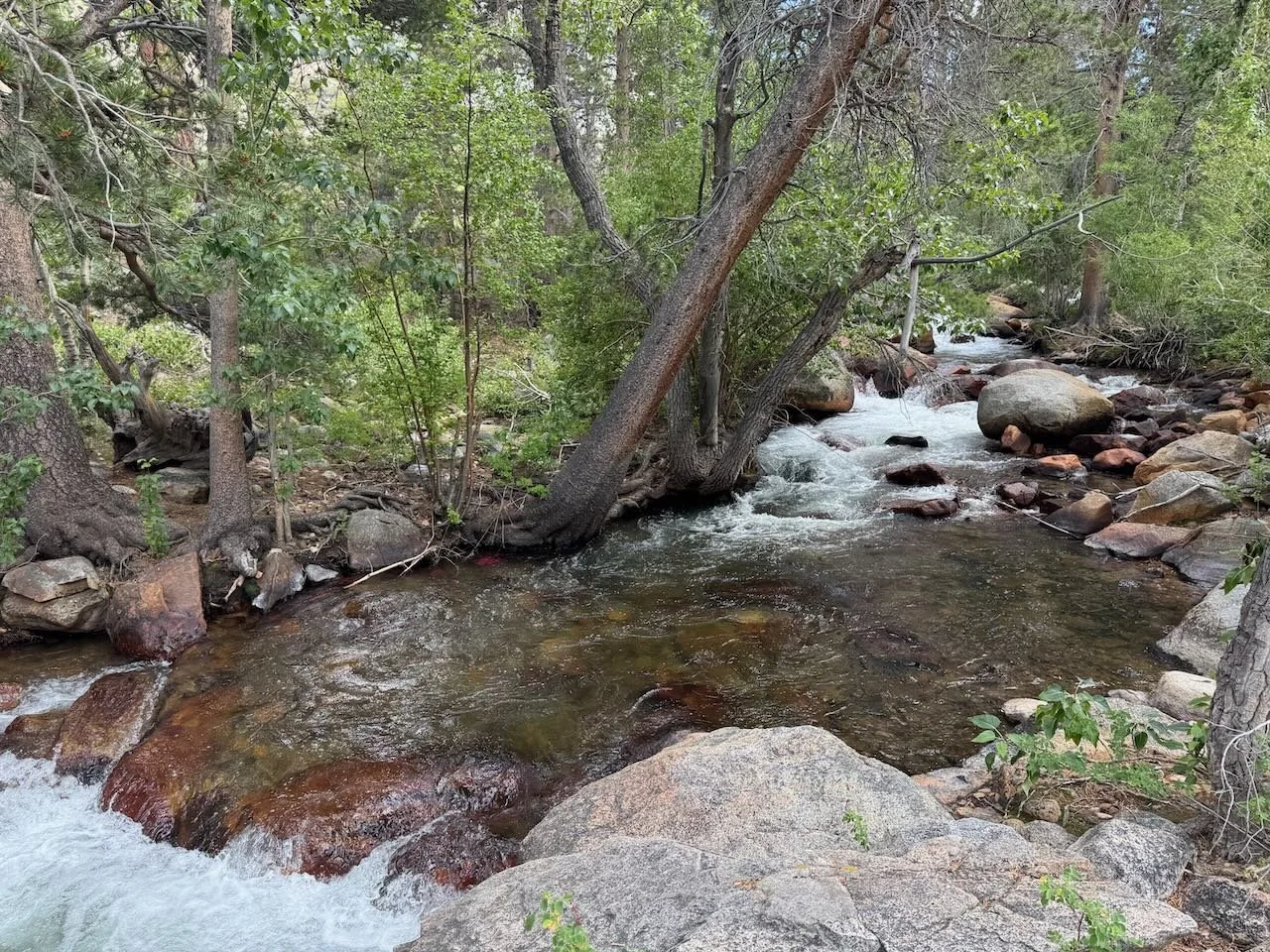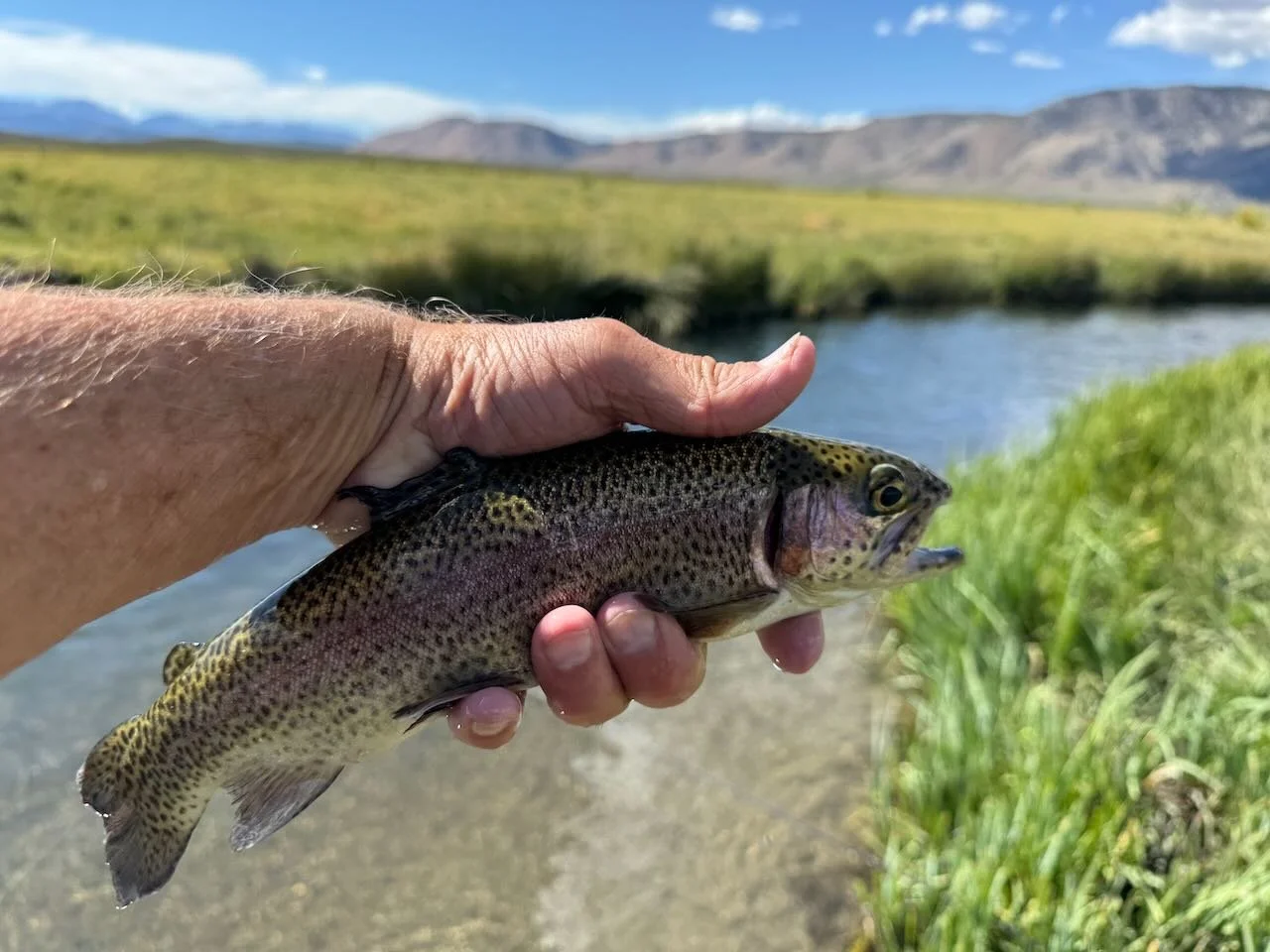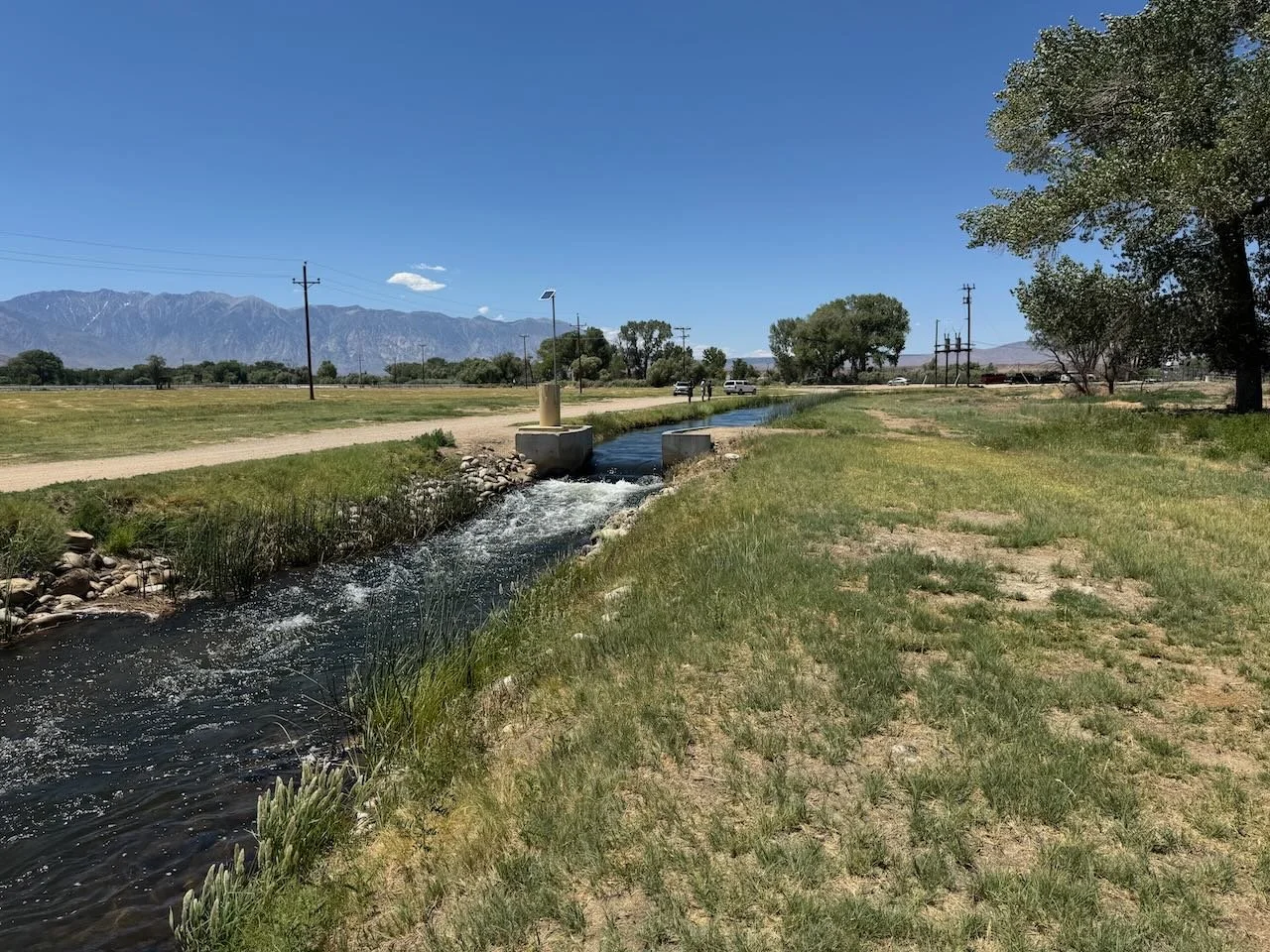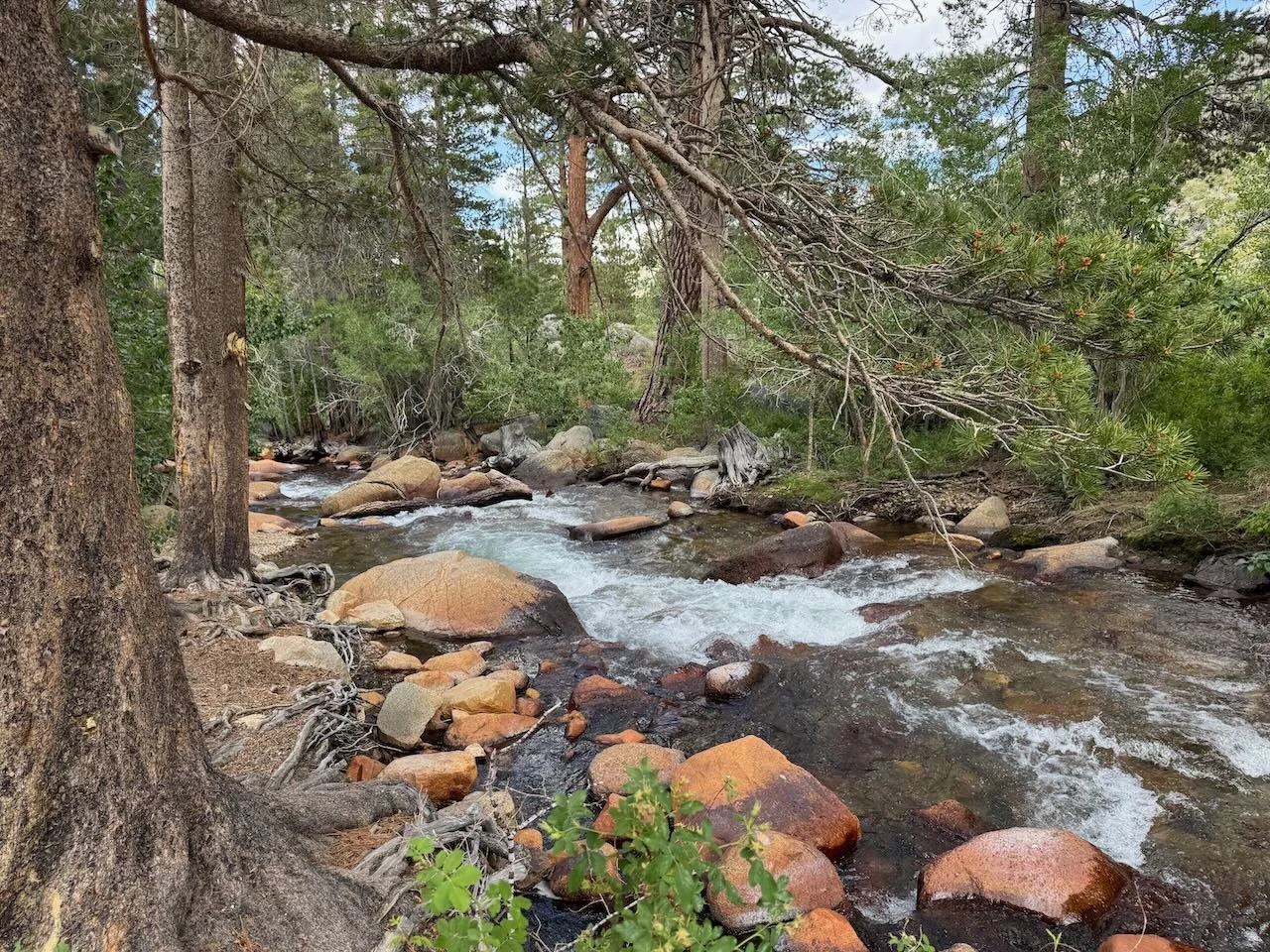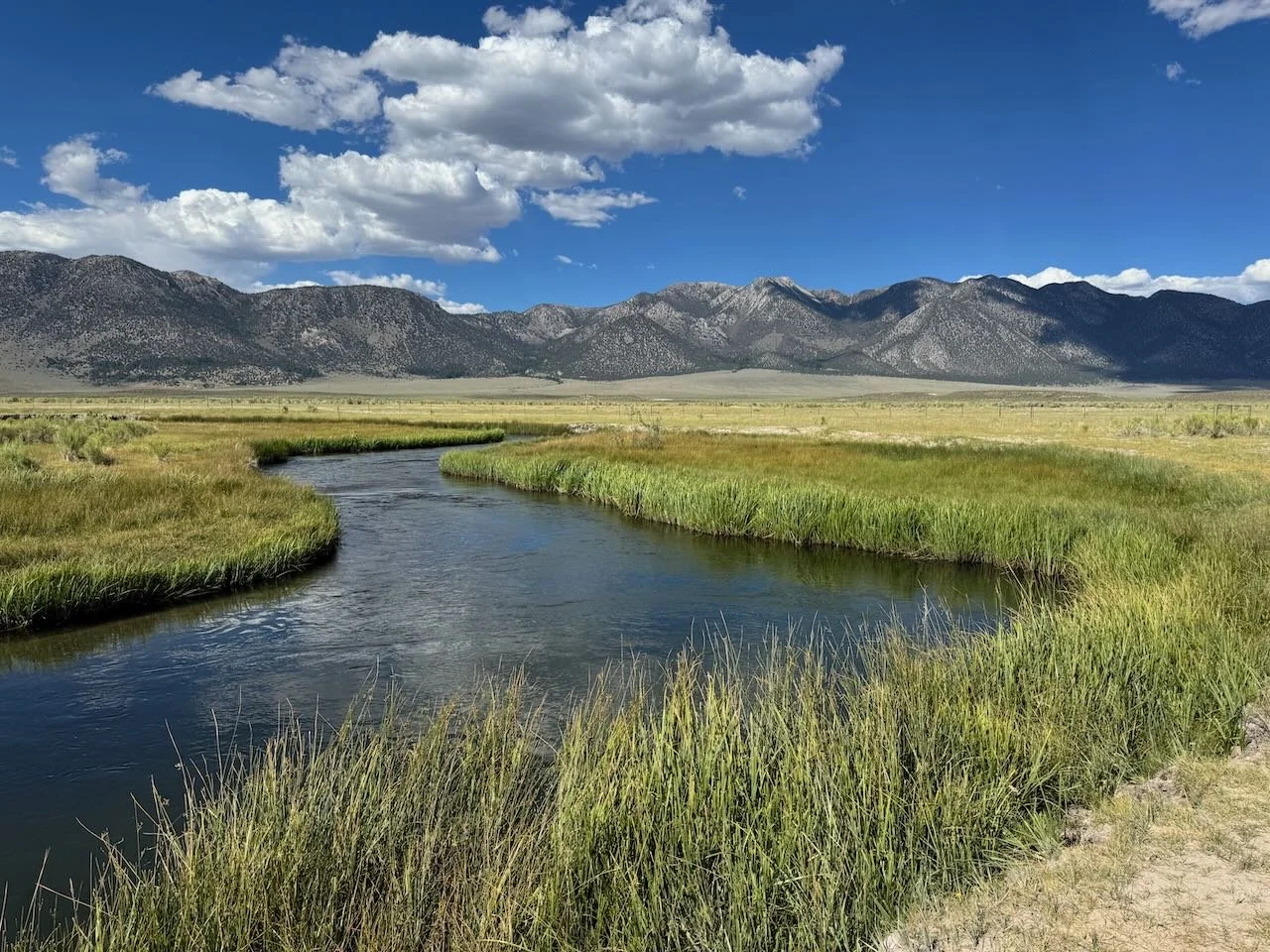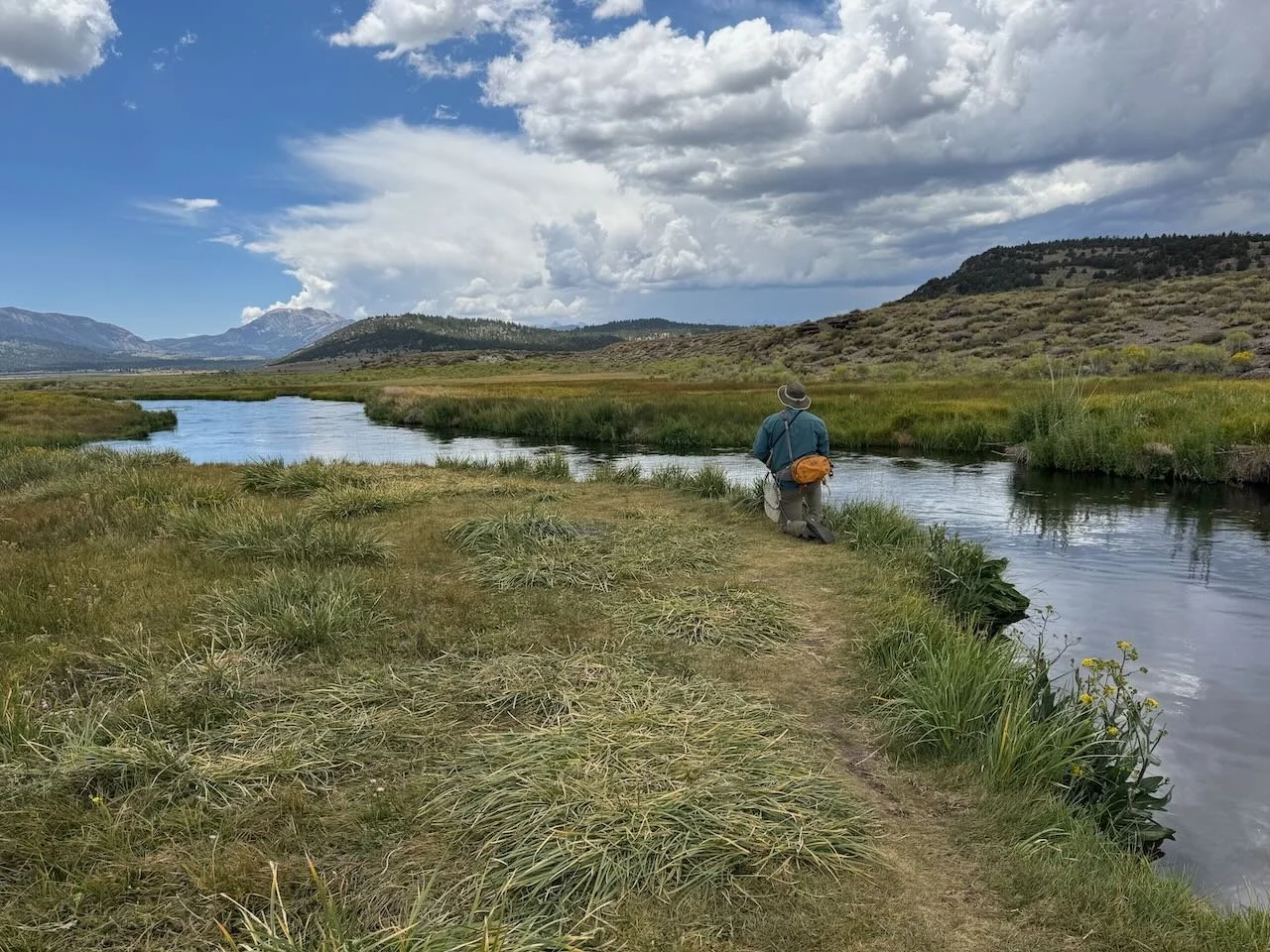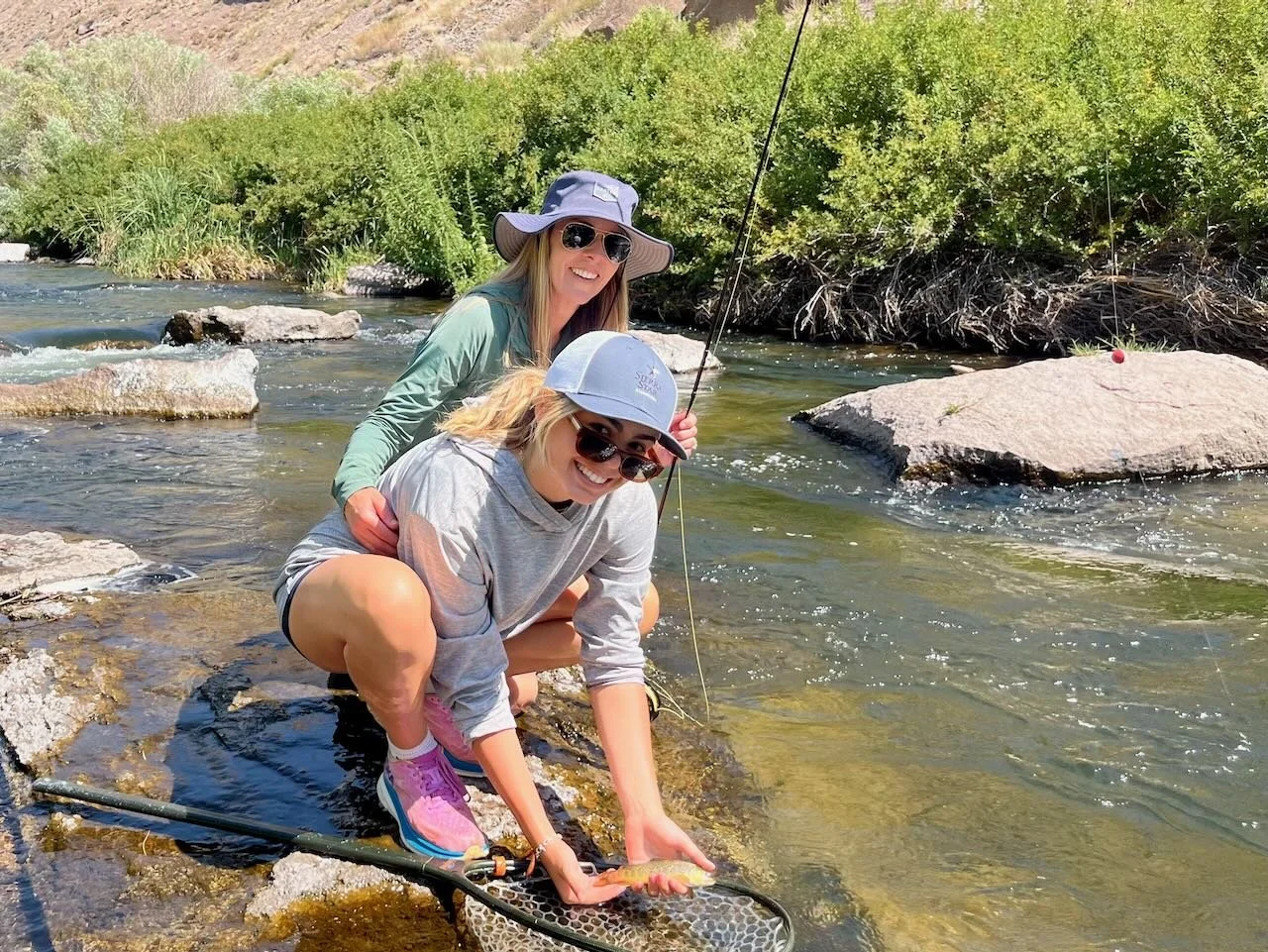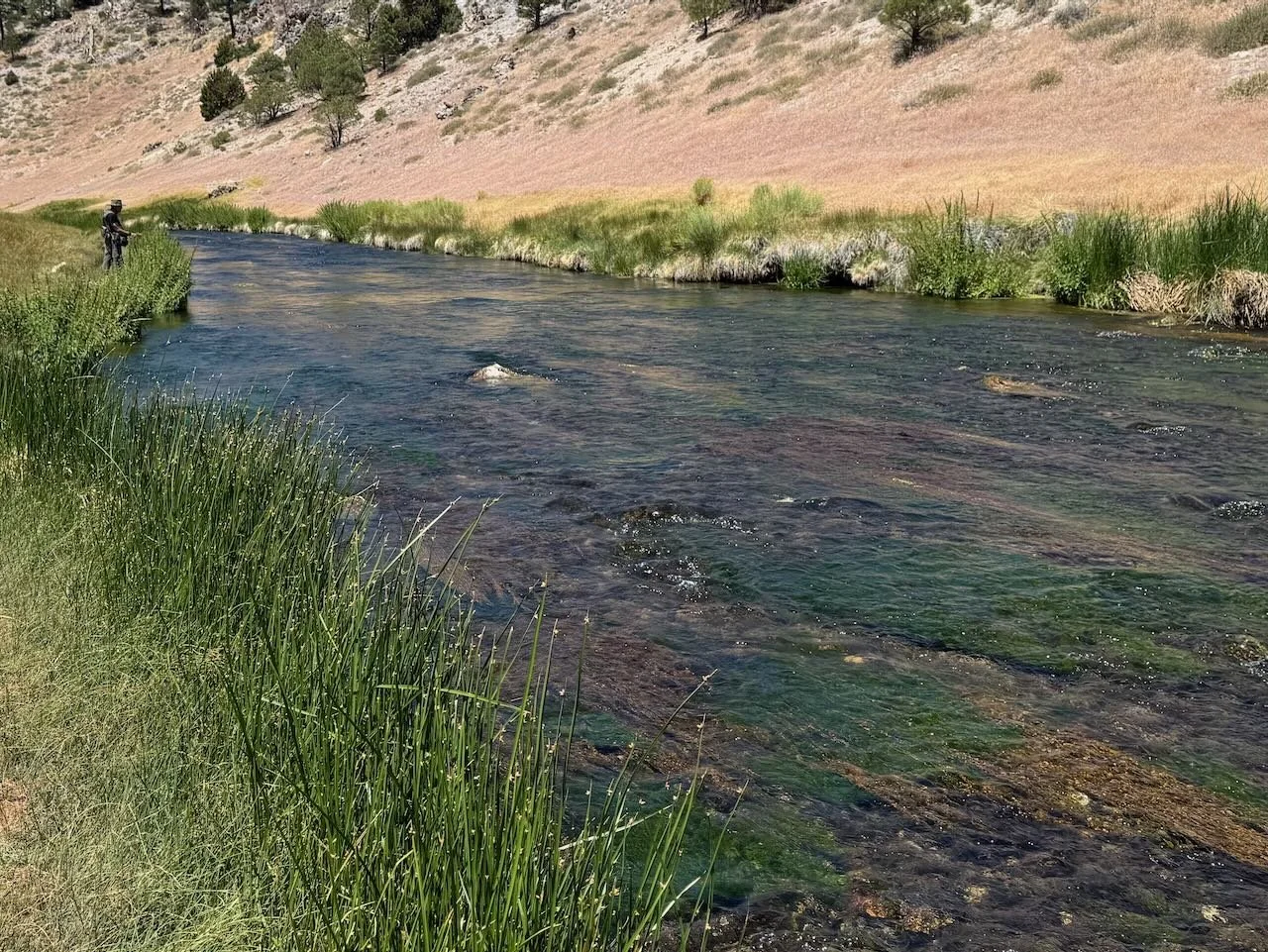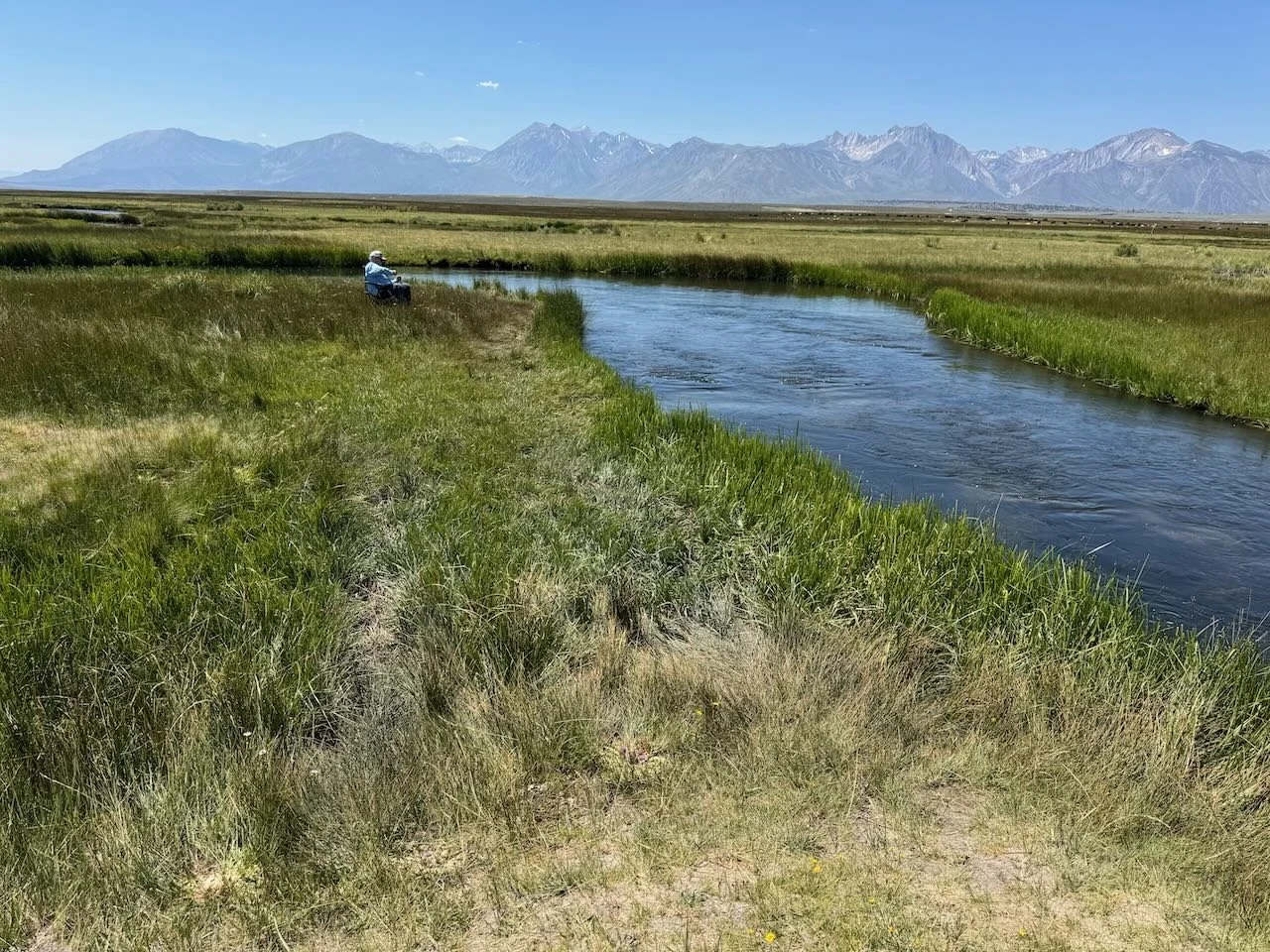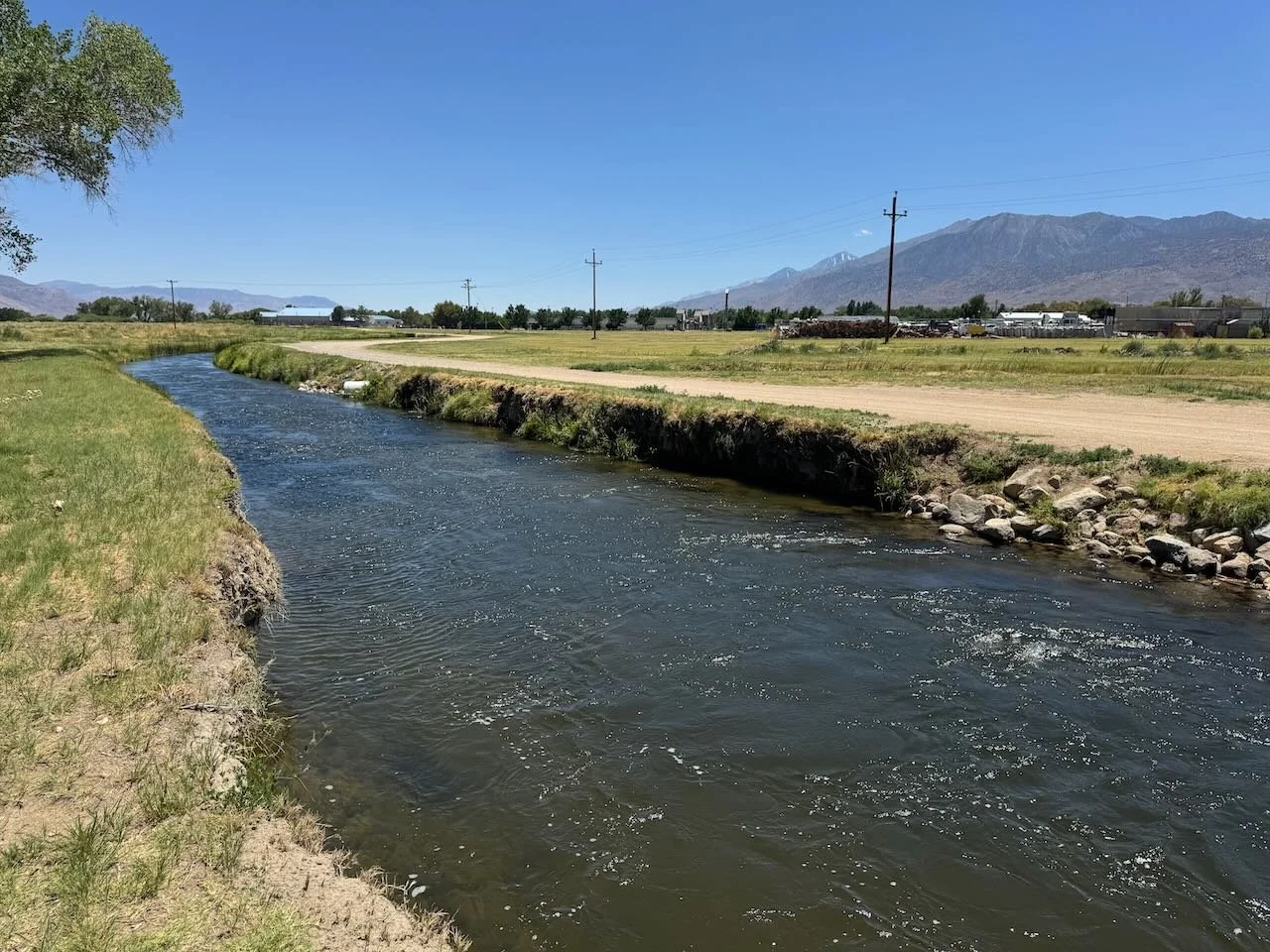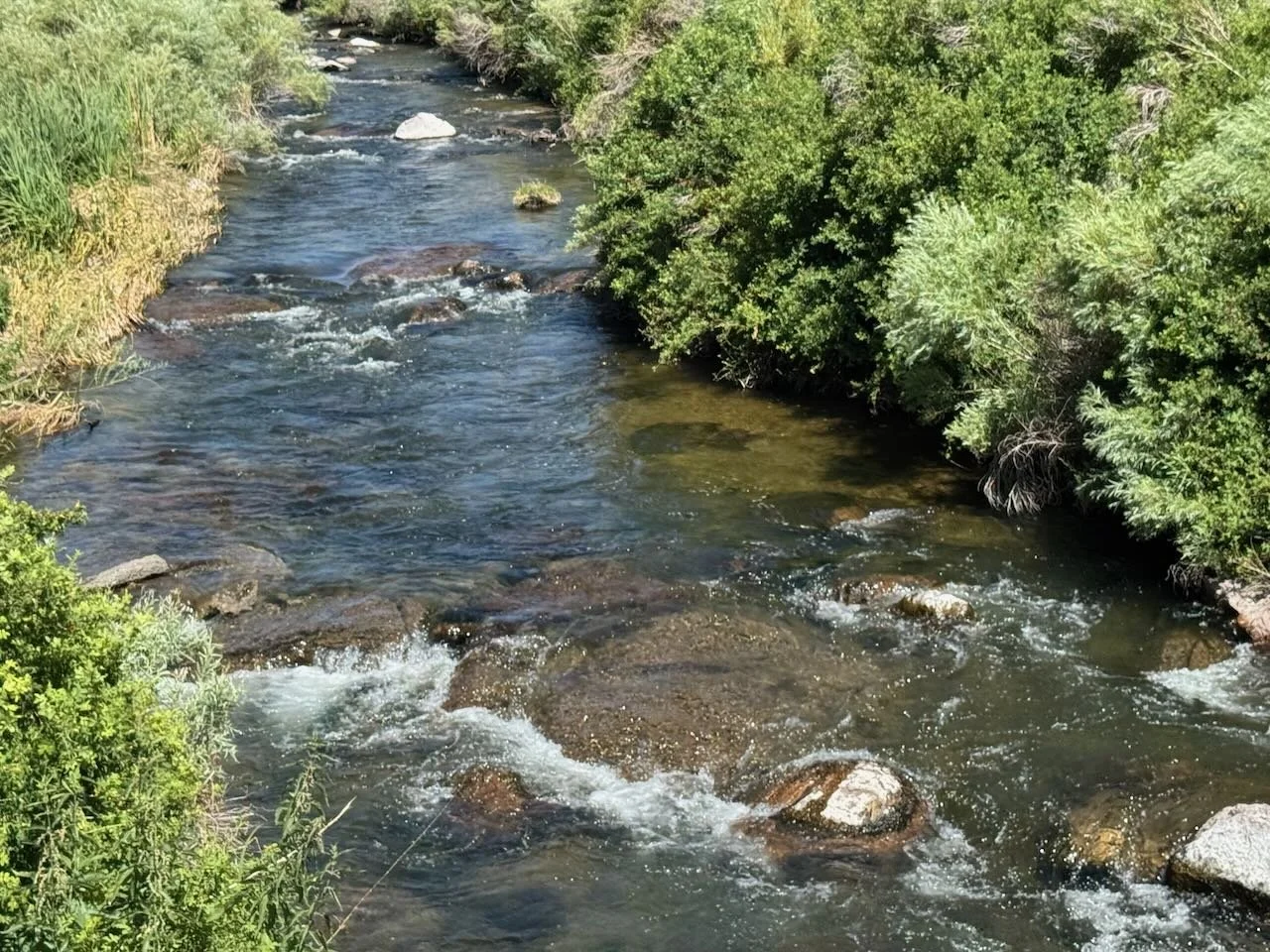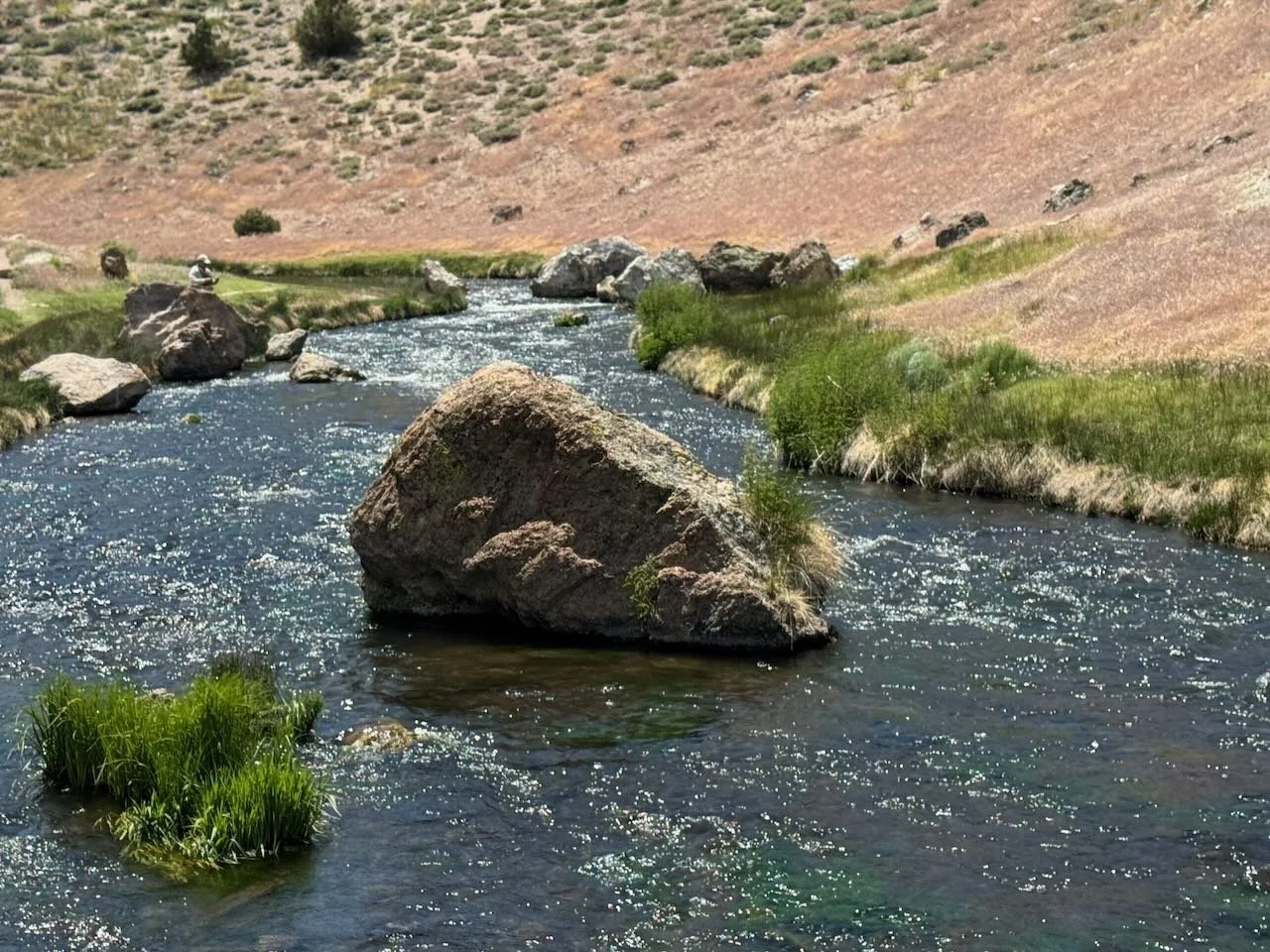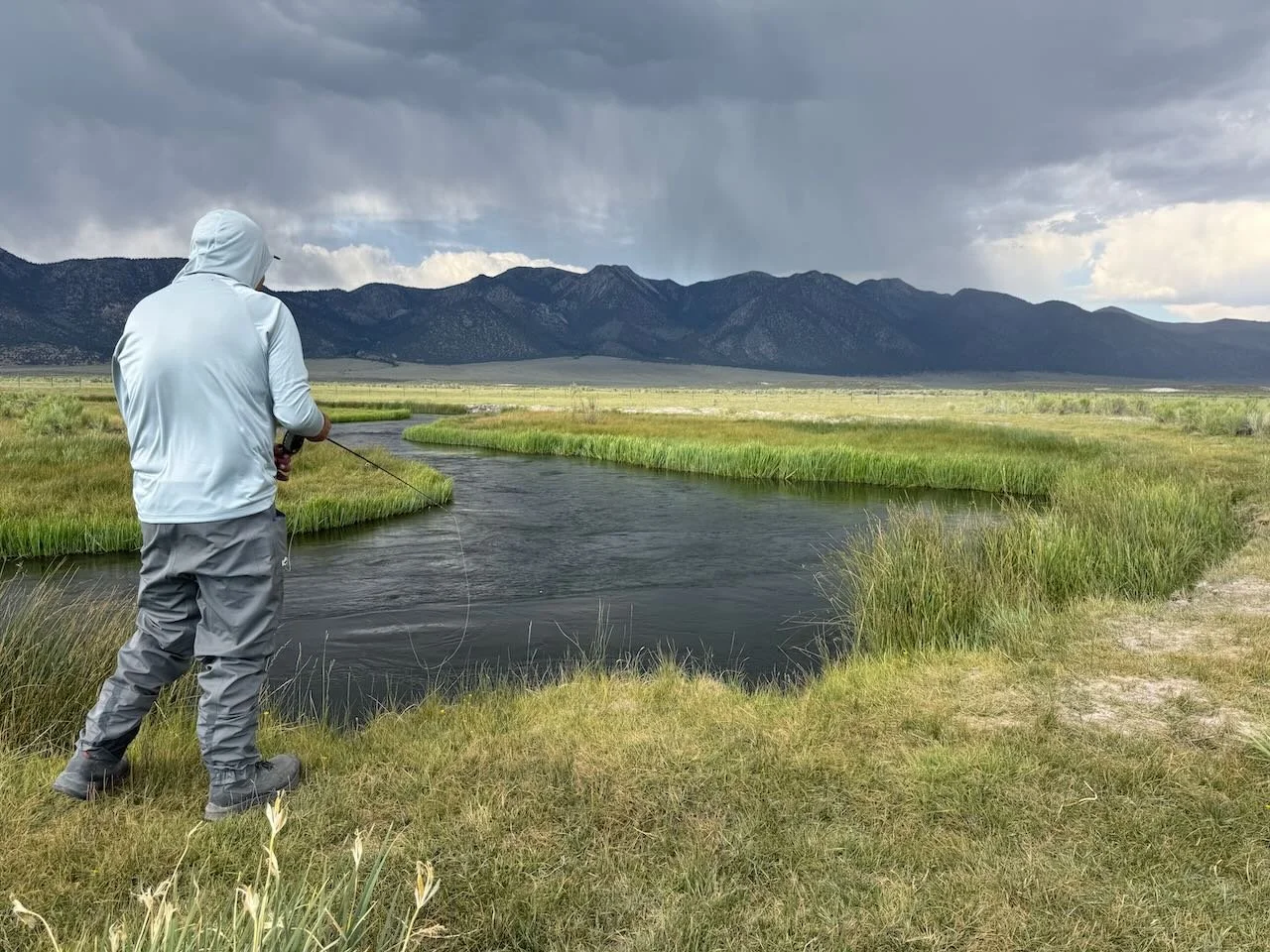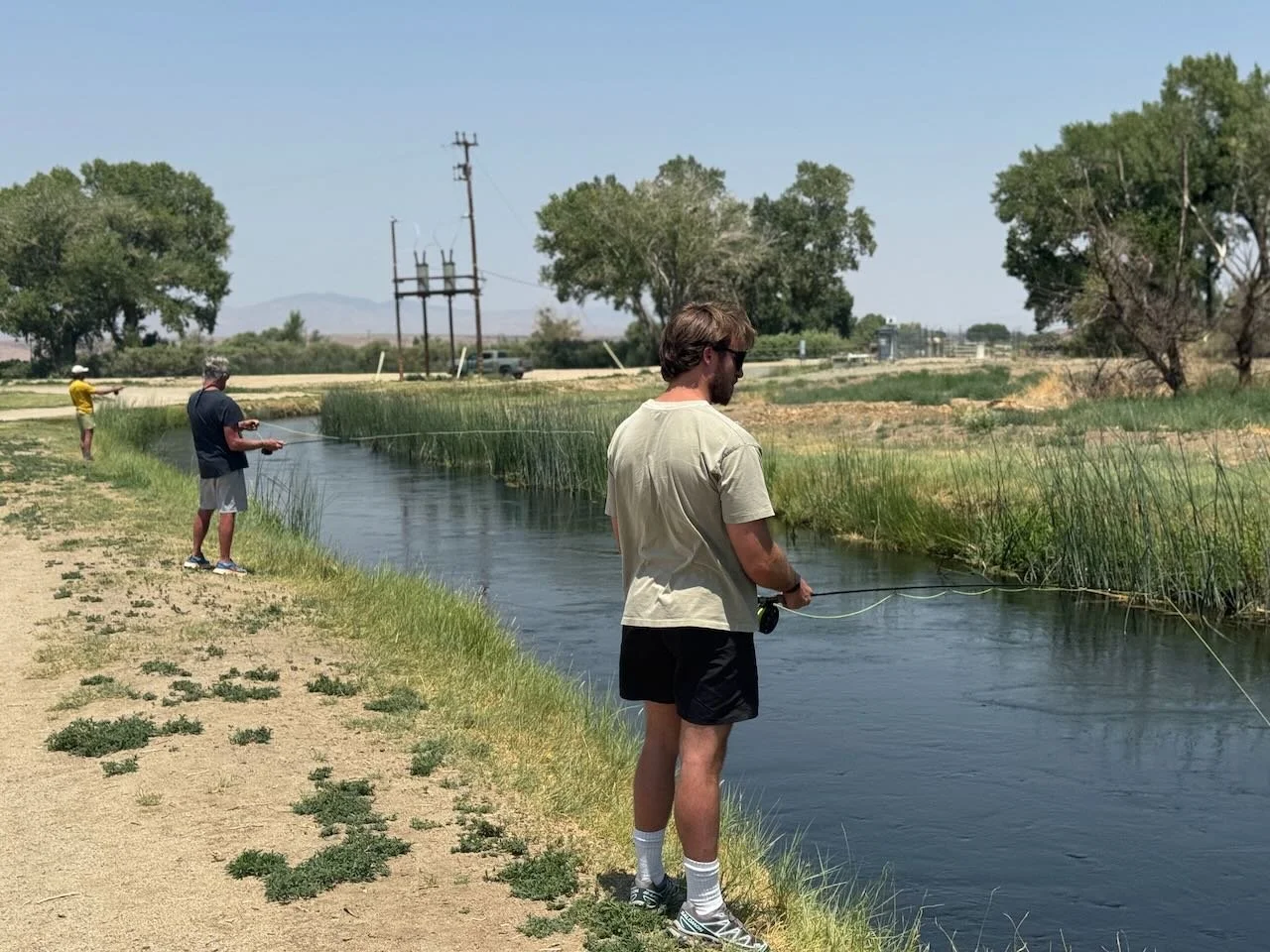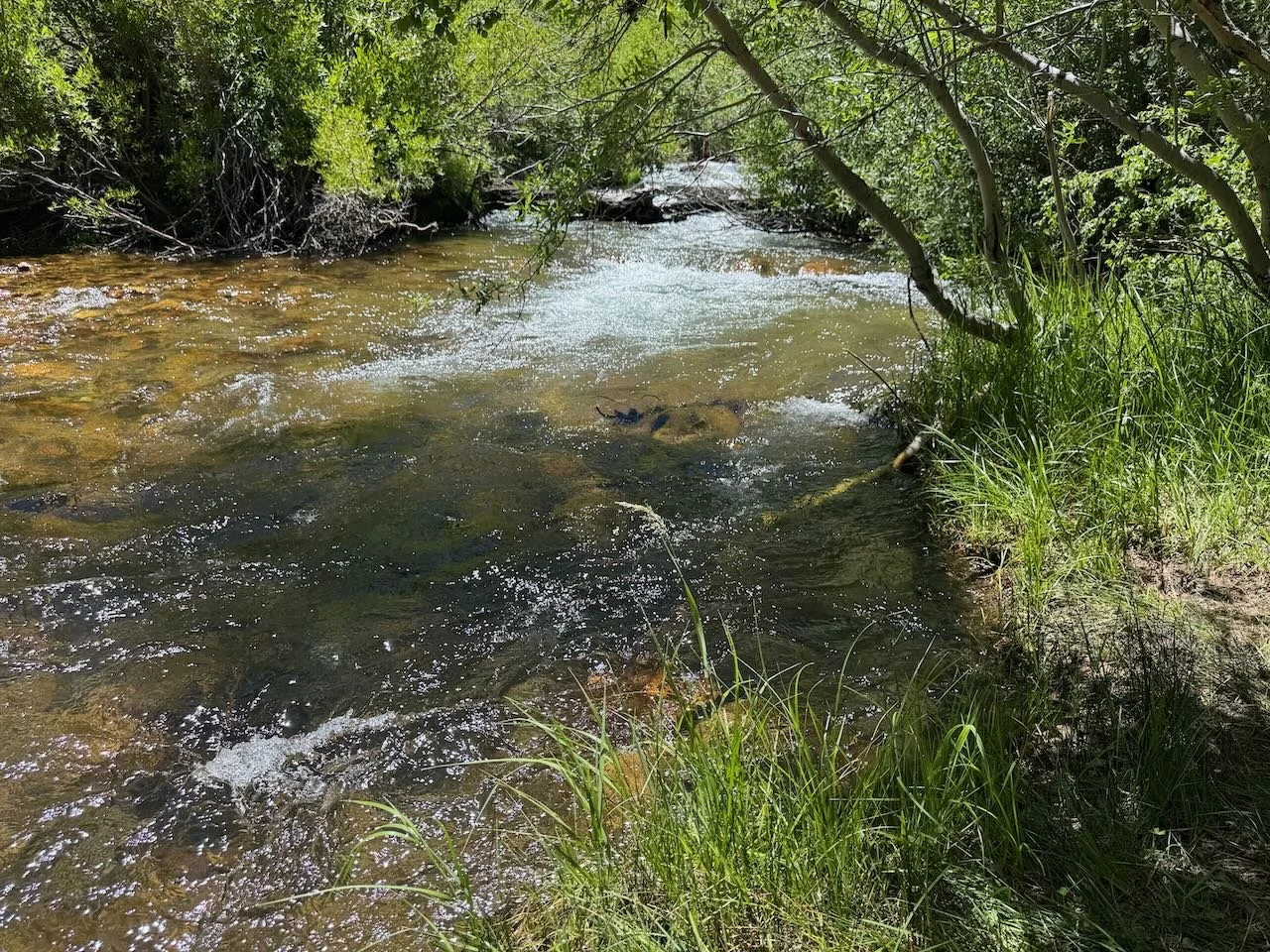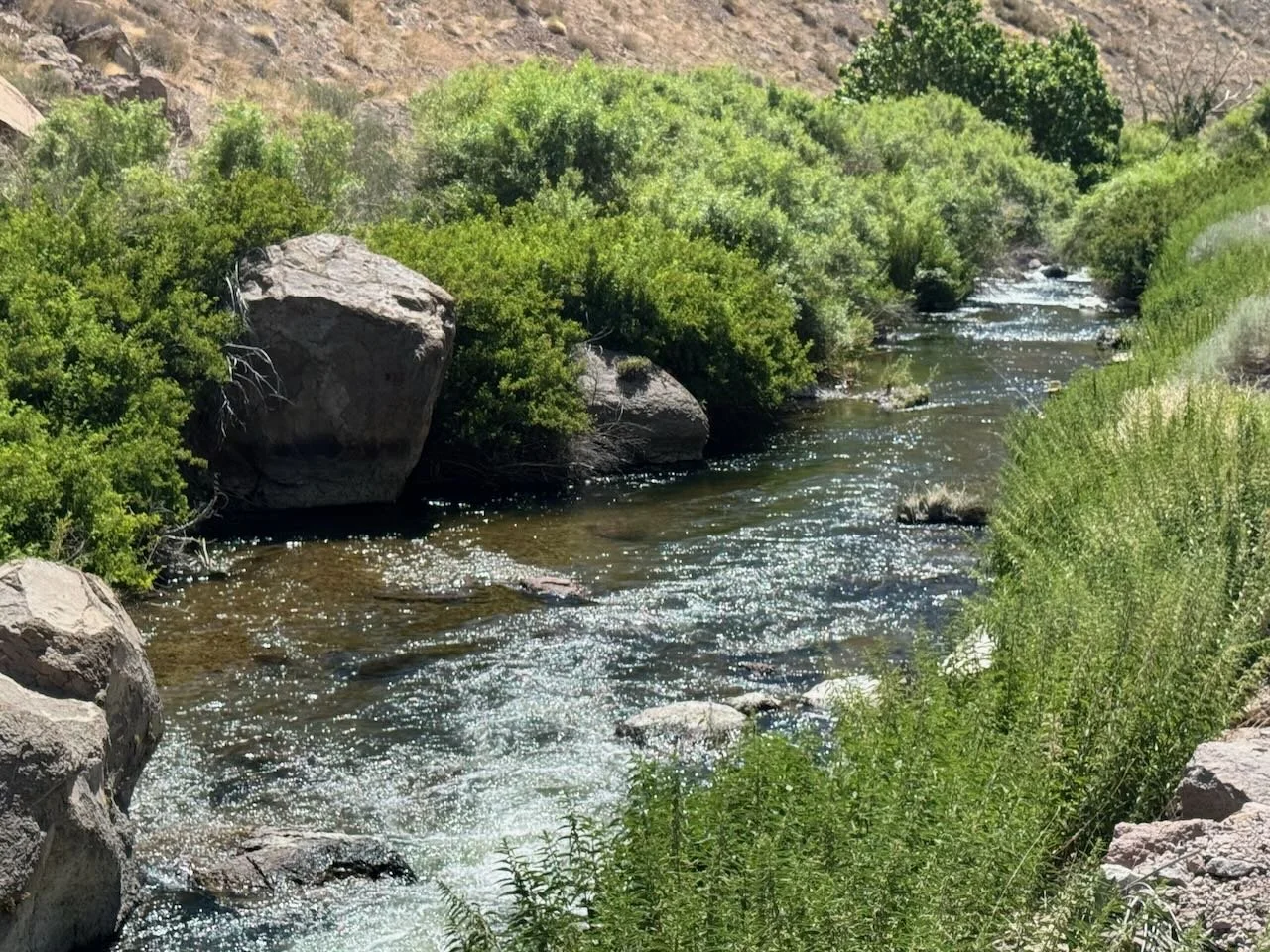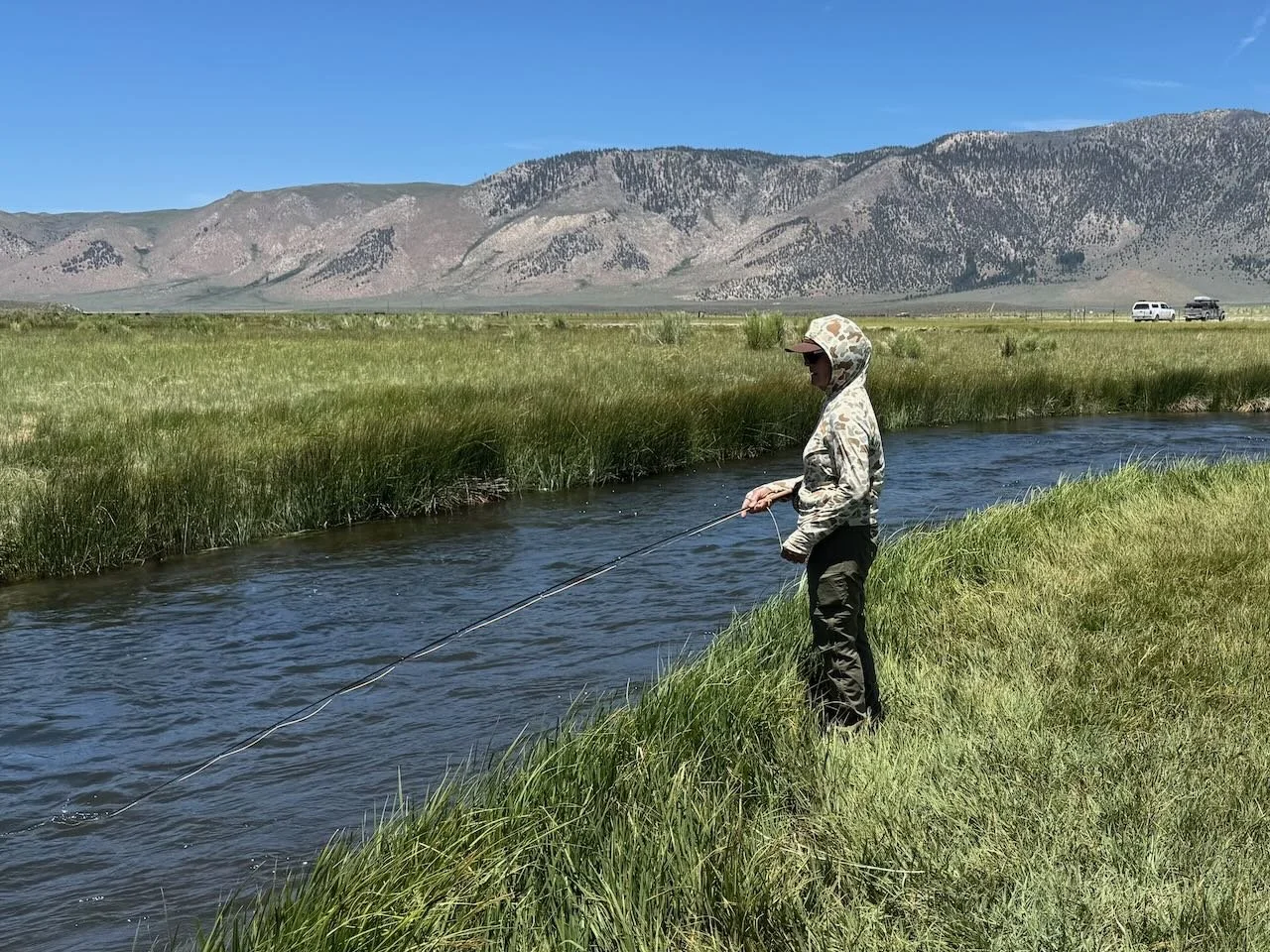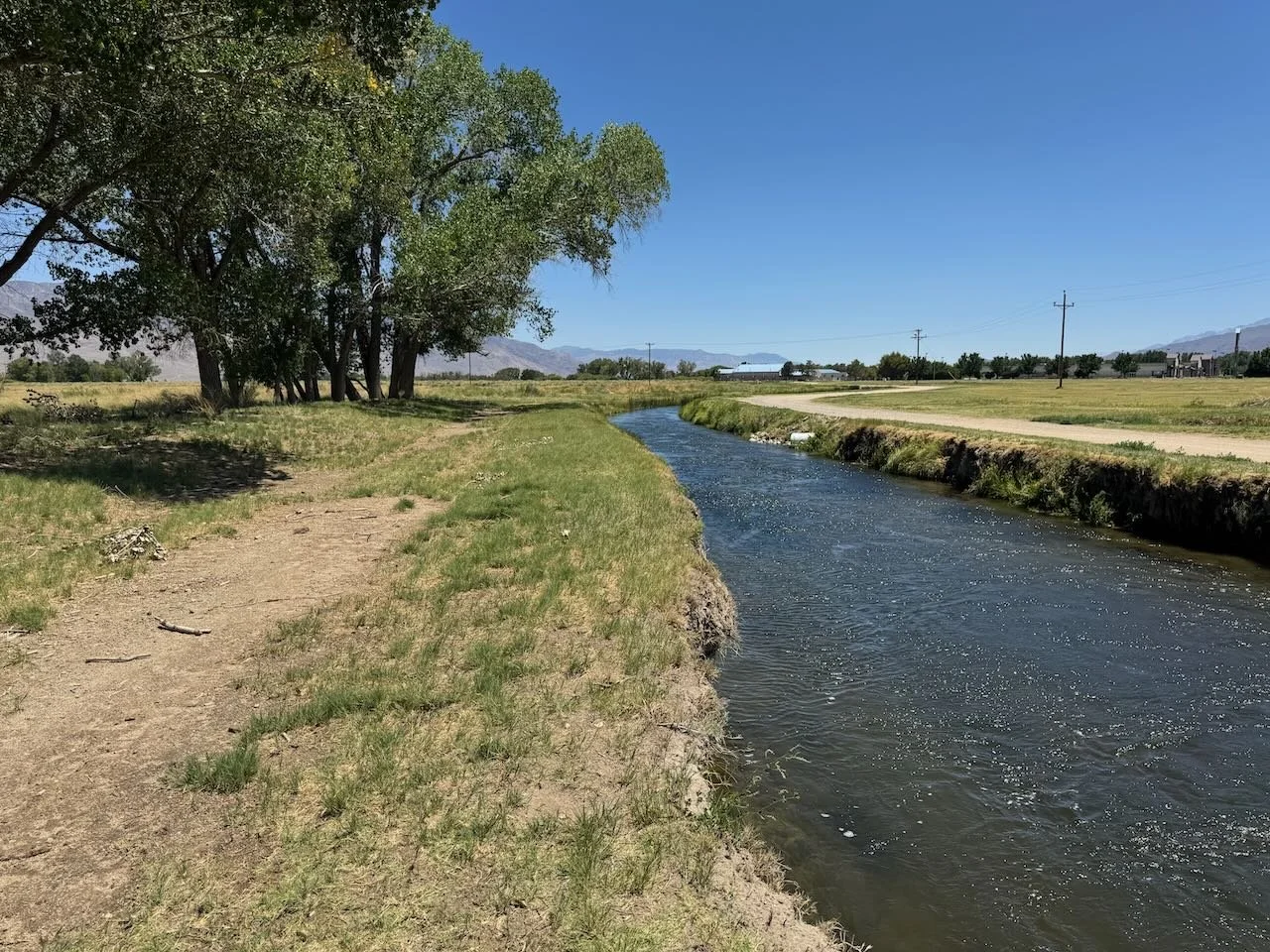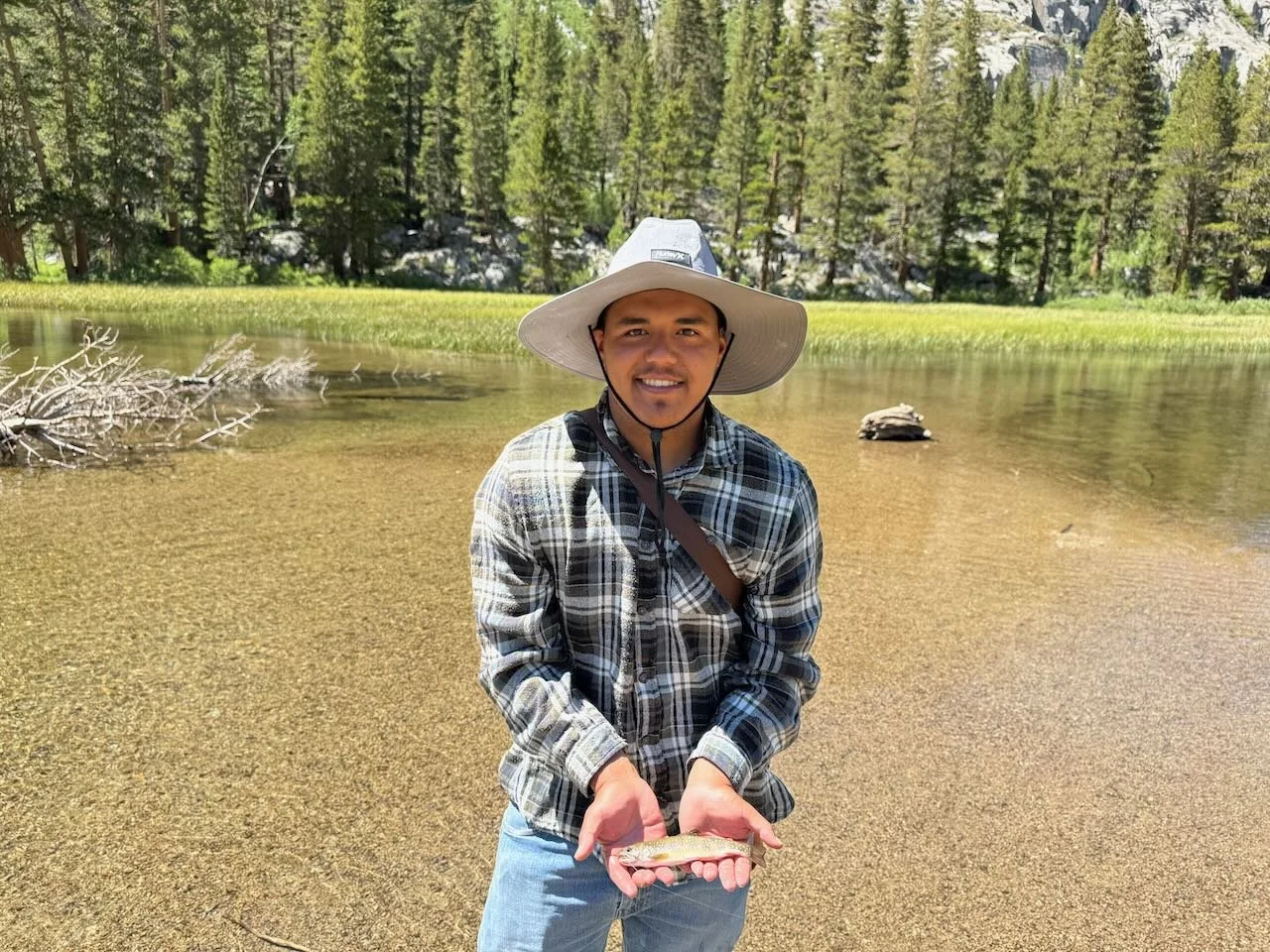The 50,000 acre Garnet fire north east of Fresno is filling the Eastern Sierra with smoke. Mammoth Lakes and the Owens Valley is filled with lots of smoke to the point that it’s been unsafe to be outside. Certain high altitude waters have been saved from the smoke and is an escape from the smoke for fly fishers. Where the smoke is lingering is changing daily. The smoke has been coming over Mammoth Pass and Mammoth has the greatest concentration of smoke. Hopefully by the weekend the smoke will have moved out of the Eastern Sierra. Time will tell what is instore for Eastern Sierra waters and the smoke from the Garnet fire. Trout are feeding on nymphs, emergers and adults of mayflies, caddisflies and midges. Fall colors are just starting to happen at upper elevation waters. Trophy trout show up in the fall, but are not in Eastern Sierra tributaries yet.
Smoke from the Garnet Fire is pouring into the Eastern Sierra through Mammoth Pass and makes for a beautiful back drop for the lower Owens River whose flows are starting to drop.
East Walker River:
The East Walker River below the miracle mile section is offering good fishing during the day with nymphs, dries and streamers. Nymphing under an indicator or with a Euro nymphing outfit is producing wild brown trout and rainbows up to 20 inches. Fish with size 16 Frenchie’s, size 12 stoner nymphs, size 16 SOS nymphs, size 16 gold ribbed hare’s ears and midges in zebra, tiger and blood coloration in size 16 when nymphing. The miracle mile section has not fully recovered from last years devasting fish kill. Best fishing is from the bridge to the Nevada border. Water level are perfect for wading right now. Rocks in the river are slimy and wading can be slippery.
Tim Andre from Trabuco Cyn hooked up on the East Walker fishing a Frenchie under an indicator.
Owens River Gorge
Upper Gorge Powerplant:
The Owens River Gorge is a tail water fishery that fishes like a freestone creek. A dry and dropper rig is the perfect way to fish in the gorge. Normally in a freestone creek the trout are looking up and taking the dry fly. In the gorge the trout are keying in on the nymph. For the dry fly use a size 16 Adams parachute, elk hair caddis, Royal Wulff and stimulators. For the nymphs midges in tiger, zebra, and green/gold wire brassies in size 16 and olive quilldigons in size 18 have been producing lots of wild brown trout to 12 inches. With the smoke I would not risk your health walking in and out of the gorge.
Fishing the pockets and pools of the Owens River Gorge with a stimulator and green/gold brassie while wading upstream is producing lots of wild brown trout to 12 inches.
Hot Creek
Interpretive Site:
If you can handle the smoke that is filling Long Valley the Interpretive Site offers less stress on your body than walking in and out of Hot Creek Canyon. The trico hatch is bringing trout to the surface in the mornings. Start with a size 22 female trico parachute. When the trout quit hitting the parachute switch to a size 22 trico spinner. With the smoke I would head home when the trico hatch is over. If you’re willing to stay and fish after the trico hatch try fishing with an ant, beetle or hopper pattern.
The skies above Hot Creek Canyon are filled with the smoke of the Garnet Fire.
Hot Creek
Canyon Section:
I would not recommend fishing in the canyon as long as the thick smoke continues to hang in the Long Valley area. If there is a break in the smoke try fishing with a size 22 trico female parachute in the morning starting sometime after 8:00 A.M. Once the trout quit feeding on the parachute switch to a size 22 trico spinner. If you have trouble seeing the tiny flies on the water fish a dry and dry rig. Use a size 16 stimulator, size 16 Adams parachutes and size 16 elk hair caddis for the bigger dry. Any movement in the bigger fly set the hook. The bigger fly allows the fly fisher to see where on the water the trico is. The fly fisher should set the hook on any rise within the distance from the big fly to the trico pattern.
Smoke from the Garnet Fire is hiding the Eastern Sierra mountain back drop normally visible when fly fishing the upper Owens River.
Upper Owens River
Above Benton Crossing Bridge:
The smoke has been thick in the Long Valley area including the upper Owens River. Avoid this area until the smoke has lightened up. As we head into fall it’s time to start looking for trophy brown trout. The brown trout do not show up in large quantities like the rainbows and cutthroats do. The browns trickle in to the upper Owens River starting in mid to late September. It’s time to start fishing with bigger nymphs like size 12 stoner nymphs, size 12 green/gold Prince nymphs, size 14 copper John’s and size 12 gold ribbed hare’s ears variations. Fall is a great time to be pulling streamer for the trophy brown trout. For the resident eight to 12 inch wild browns and rainbows fish with trico’s in the morning and elk hair caddis in the afternoons.
The setting sun over Bishp Creek Canal is high lighting the smoke from the Garnet Fire
Bishop Creek Canal
Behind Bishop Veterinary Hospital:
Smoke has been bad in the Owens Valley making it tough to be outside fly fishing. If you can put up with the smoke or the smoke breaks try nymphing unless you see the trout feeding on the morning trico spinner fall. The trico hatch has been minimal at best. Nymphing with gold ribbed hare’s ears in size 16, bead head flash back pheasant tail nymphs in size 18, olive quilldigons in size 18 and midges in zebra and tiger coloration in size 18 are fooling wild brown trout and stocked rainbow trout.
Bishop Canyon
North Lake:
Trolling small olive wooly buggers in the fall on a sinking line behind a float tube is a great way to spend a fall day fly fishing in the Eastern Sierra catching brook trout, rainbows and brown trout.
North Lake is a great water to float tube on. It gives you access to the southern shore where few if any anglers fish. Trolling streamers behind the float tube on a full sink line will produce trout after trout after trout. Twenty to forty fish days are very doable. For streamers try size 12 olive wooly buggers, olive slumpbusters and olive matukas. Fishing the margins of the lake just outside the aquatic sedges that surround the lake with a dry and dropper rig will produce lots of wild brown trout, brook trout and hatchery rainbows. For the dry fly use a stimulator, Chernobyl ant and a hopper. You want your dry fly to ride on the water surface and be very visible to the fly fisher sitting in the float tube. For the nymphs use size 18 bead head flash back pheasant tail nymphs, size 16 midges in tiger or zebra coloration and size 16 bead head flash back gold ribbed hare’s ears attached to a three foot tippet of 5X fluorocarbon. Fall colors are just starting to pop on the quacking aspens that surround the lake. Fall colors should peak in the next 10 days.
Wild brown trout to 12 inches are feeding on midge nymphs fished under a dry fly.
Bishop Creek Canyon
Middle Fork:
Bishop Creek fly fishing is bush whacking. That is walking the banks of the creek looking for spots where you can access the stream and cast your dry and dropper rig. The pockets and pools is where the trout are hanging out. Using a size 16 stimulator and size 16 tiger midge have been producing wild brown trout and stocked rainbow trout. The tiger midge has been producing the bulk of the trout. Watching the dry fly for any movement and setting the hook is how you catch the midge feeding trout of Bishop Creek. The smoke has been minimal in Bishop Creek Canyon.



